Launched at the beginning of 2020, Tamron’s trio of fast primes made quite a splash among Sony users. The 20mm, 24mm and 35mm all offer almost exactly the same size, and each provide a fast F2.8 maximum aperture, 0.5x macro focusing, weather resistance and a light weight.
Today we are taking a look at the widest option on that list, the Tamron 20mm F2.8 Di III OSD M1:2 (Model F050). Designed specifically for Sony E-mount, this full frame lens competes with the likes of the Sony FE 20mm F1.8 and the Rokinon/Samyang 18mm F2.8. The Tamron offers a smaller size and lower price than the Sony (albeit with a slower aperture), and has the advantage of weather resistance over the Rokinon (while being larger).
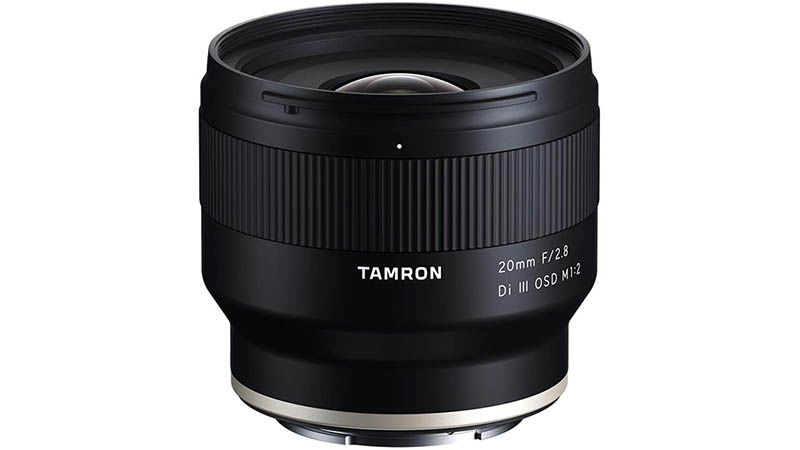
In this in-depth review, we will take a look at all the technical and artistic parameters which help to define a lens. Read on to find out everything there is to know about the Tamron 20mm F2.8!
Table of Contents[Hide][Show]
Specifications
| Lens Name | Tamron 20mm F2.8 Di III OSD M1:2 (Model F050) |
| Optical formula | 10 elements in 9 groups |
| Image circle | Full frame |
| Field of view | 94° |
| Aperture range | F2.8/F22 |
| Aperture blades | 7, curved |
| Aperture ring | No |
| Max magnification | 0.5x |
| Minimum focus distance | 10.9 cm (4.3 inches) |
| Internal focus | Yes |
| Filter thread diameter | 67mm |
| Lens cap | Plastic, clip-on |
| Lens hood | NA |
| Diameter x Length | 73 x 63.5 mm (2.87 x 2.5 in) |
| Weight | 221 g (7.8 oz) |
| Price (US MSRP) | $299 (frequently down to $249) |
Construction and Handling
In this section, we take a look at the physical characteristics of the Tamron 20mm.
Front Element
The front of the lens is devoid of markings. The glass takes up a relatively small part of the total front surface.
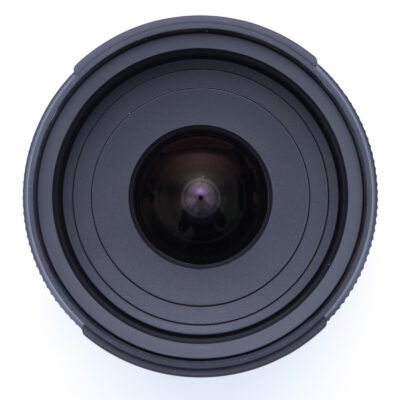
The lens uses a large 67mm filter thread. This diameter is shared with its siblings the 24mm and 35mm. The lens cap is plastic.
Lens Body
The Tamron 20mm has a simple body with a minimum of features and controls.
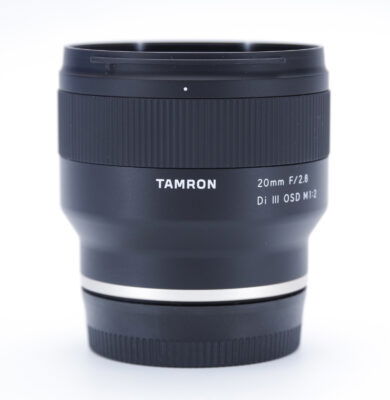
The bottom of the body, near the camera mount, bears a silver ring. This nicely matches the dual-color of the Sony A7C. A discrete mark next to the silver ring helps to line up the lens for mounting. Above, the lens tapers out to a larger diameter.
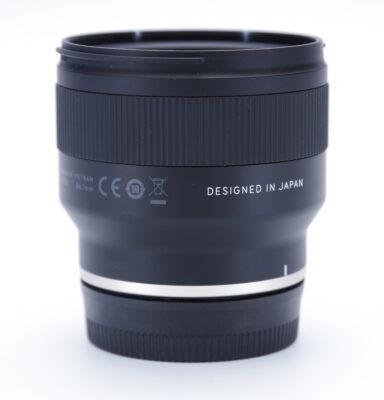
Higher up are the only markings on the lens. At the center is the brand name, and to the right is the lens name. At the back are the certification markings and the “Designed in Japan” label. Next is the wide focus ring. As with other E-mount lenses, the 20mm uses focus by wire and, while it does offer manual focus override, this must be activated in a menu and cannot be used with continuous AF. There is no switch for manual focus on the lens.
The ring is ribbed and easy to find.
The lens does not extend when focusing.
Aperture
The Tamron 20mm uses 7 curved aperture blades.
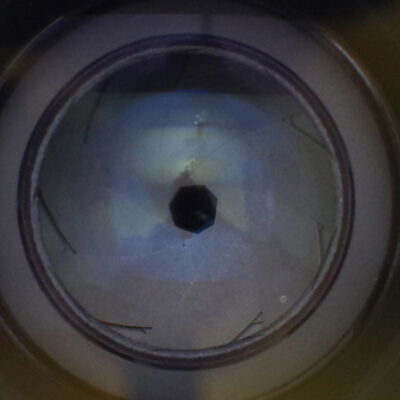
Lens Mount
The lens mount is metal, and features a black o-ring to protect against water ingress.
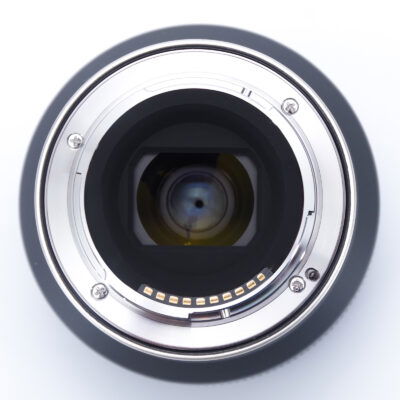
There is a rectangular cut-out on the back, to diminish stray reflections. To some extent, it serves a function akin to a lens hood.
Lens hood
The lens ships with a plastic lens hood, not too deep and easy to reverse for transport.
Mounted On Camera
The Tamron 20mm looks right at home on the Sony A7C, for which it is an excellent match.
Compared to
Below is the Tamron 20mm F2.8 compared with Sony’s FE 28-60mm, retracted and extended.
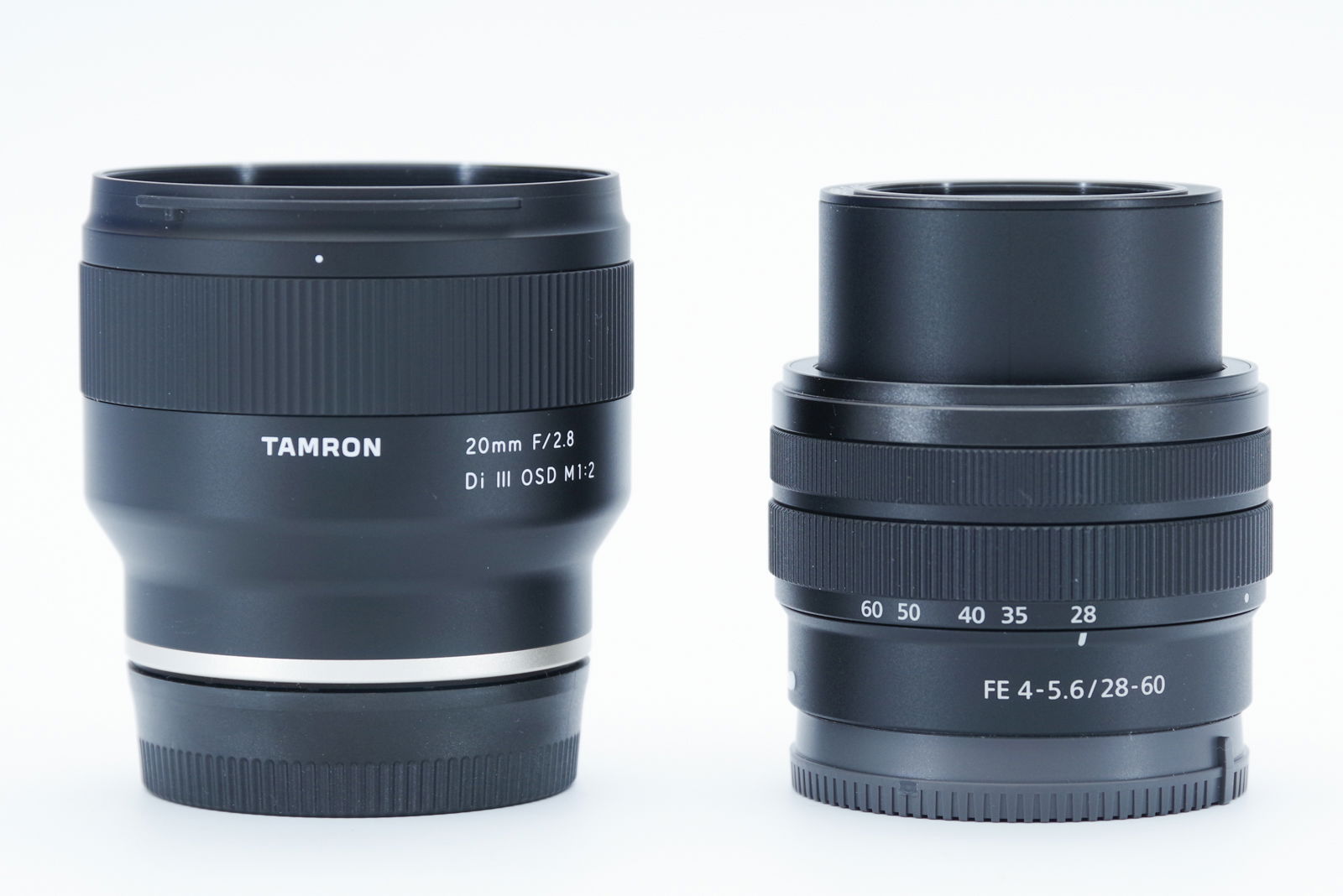
Tamron 20mm and Sony FE 28-60mm extended 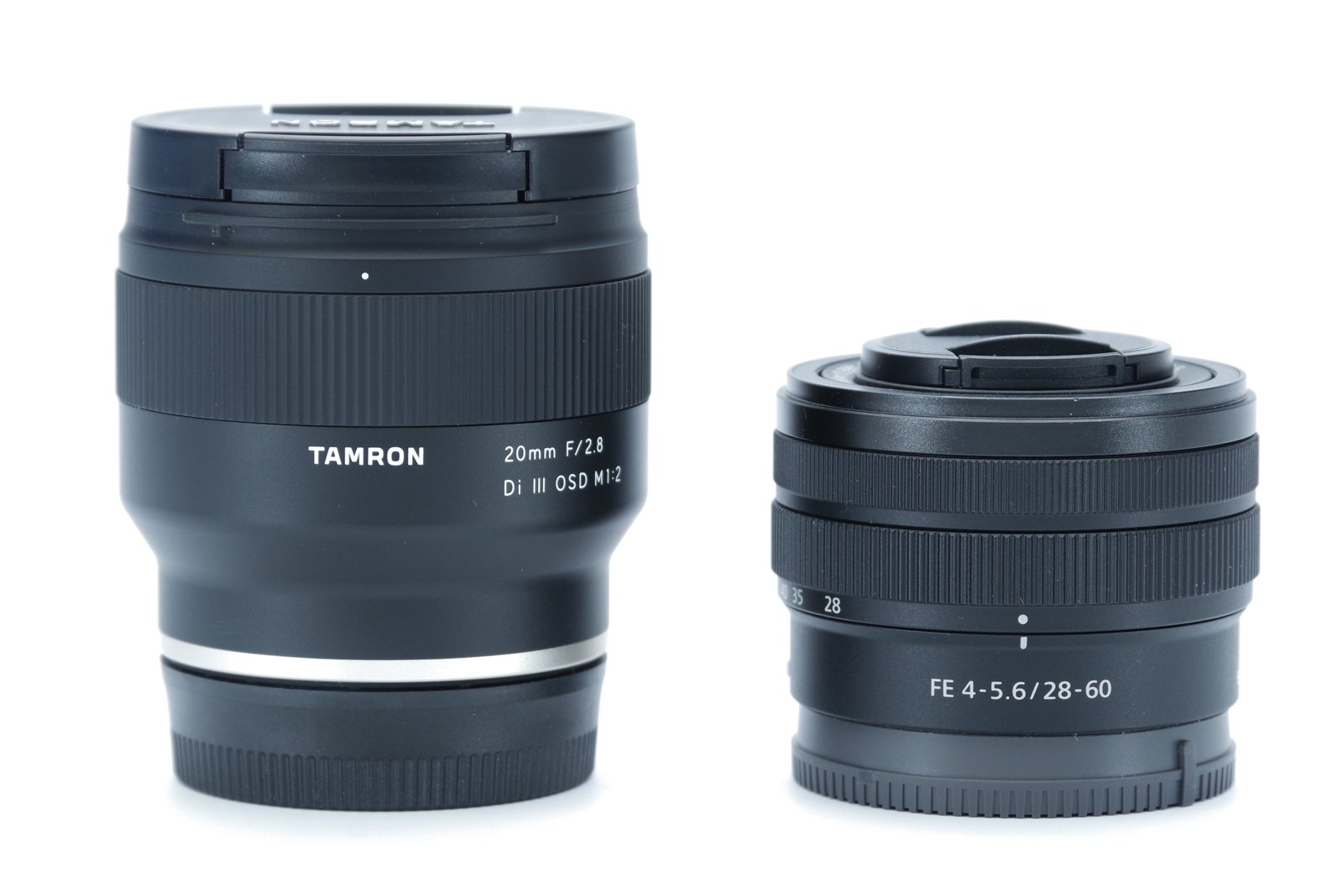
Tamron 20mm and Sony FE 28-60mm retracted
In the box
The lens ships with the basics: lens caps, hood, documentation, and nothing else.
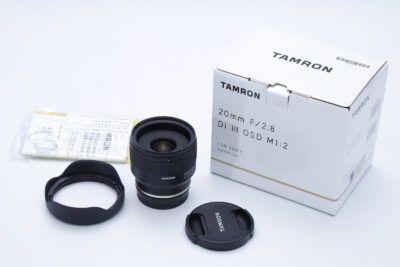
Focusing
Focusing with the Tamron 20mm F2.8 is pleasant. The lens is not completely silent; it emits some clicking sounds when adjusting focus. These will not be audible in most situations but will be noticeable for the photographer in silent environments.
Focusing can feel quite slow when the lens needs to rake through the whole range. It seems subjectively slower when going from close subjects to distant ones. Smaller adjustments, on the other hand, are almost instant. The 20mm keeps up flawlessly with subject tracking using AF-C. It supports every focusing mode available on the A7C.
There are no switches or dials on the lens, controls are all done via the camera, which makes using manual focus cumbersome at times. The focus ring is surprisingly well dampened and shouldn’t move accidentally. It also gives nice feedback to the user. There is no backlash or observable delay when focusing manually. The precision of the focus adjustments will be dictated by the speed of rotation of the focus ring. Tamron did a good job even though focus-by-wire is not as direct as mechanical focusing.
There were no occurrences of hunting during our tests, even in very low light. However, sometimes the system made odd choices when using the “Wide” AF area, something more closely linked to the camera than the lens.
AF Speed
AF speed was tested with the A7C. The subject was a black cross on a white background, about 1.5 meters in front of the camera. We used the central focus point. Three measurements were averaged for each data point.
For reference, 5 EV corresponds roughly to a small room lit with a 60 W bulb, and a sunny day corresponds to 16 EV, and a moonlit night to -2 EV.
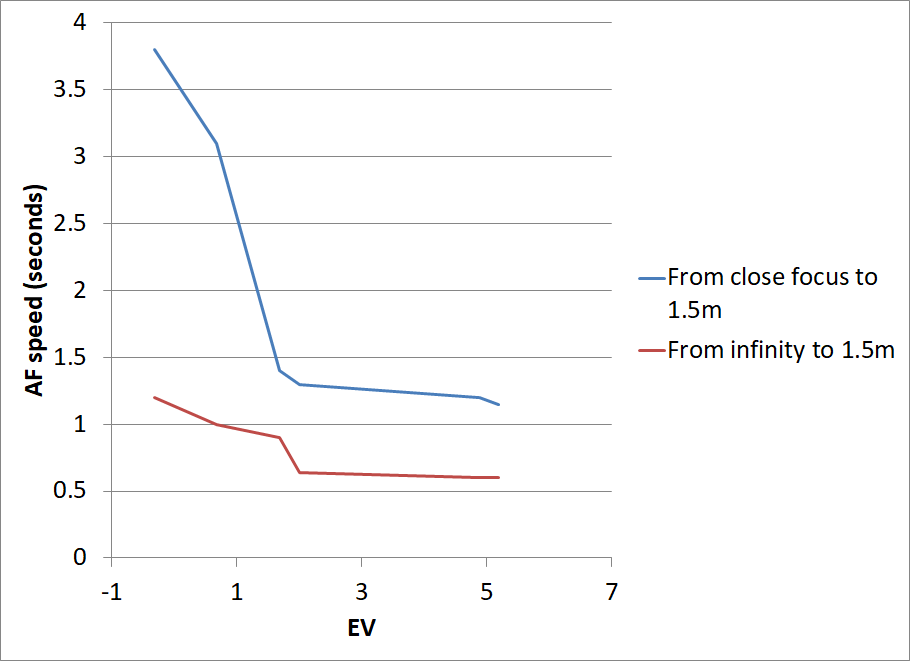
Usually, we test AF speed by moving from infinity to about 1.5m. In this case, in part because of the close focusing capabilities of the lens, its AF speed is quite different depending on the starting point.
When going from infinity towards the focus distance, AF is slow when light is low, but gets much better at decent light levels. There is a visible step around 2 EV, beyond which there is almost no improvement with better light. It tops a little over 0.5 seconds.
When coming from close distance, however, the focus speed is painfully slow. In very low light levels it takes almost 4 seconds to lock focus. It quickly drops by more than a half, but never gets much below 1.25 seconds. This is extremely slow. The lens never hunts, but moves slowly towards the target.
Note that micro-adjustments are very fast, and will not be a problem. Going from one end of the range towards a middle value, however, will never be fast.
AF Tracking
AF tracking, or continuous AF, is a hallmark of Sony cameras. As such, it is important to evaluate whether or not the Tamron 20mm can keep up with fast movements of the subject.
In our experience, the lens performs very well in this regard. The wider angle means that the subject rarely fills the whole field of view. Once focus is locked, the camera keeps up with all subjects movements. We almost never encountered occurrences when the camera would lose its focus lock once achieved. In this regard, the camera performs better than with single AF.
The following animation illustrates an apparently simple scene, but one which involves first vertical movement, then movement towards the camera, followed by a rotation of the viewing angle and movement away from the camera. All 42 frames in this series turned out sharp and well focused.
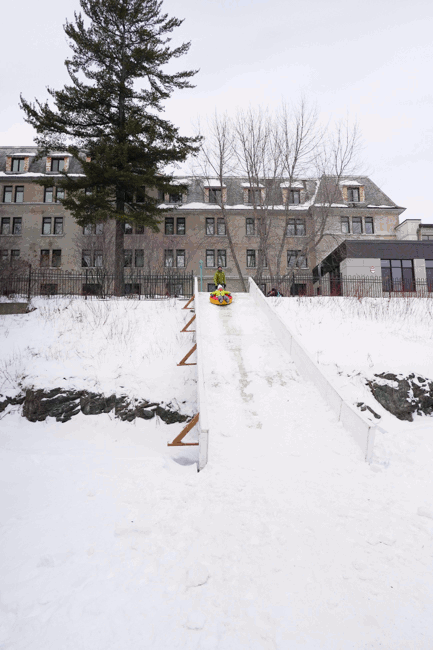
General Image Quality
Before diving into the technical aspects of this review, let’s have a look at the more subjective elements which can make or break an image.
Field of View
20mm is wider than the ubiquitous 24mm and 20mm almost always found on standard zooms. As such, the Tamron 20mm offers a much wider field of view than what many users will be used to, without going overboard with ultra-wide angle.
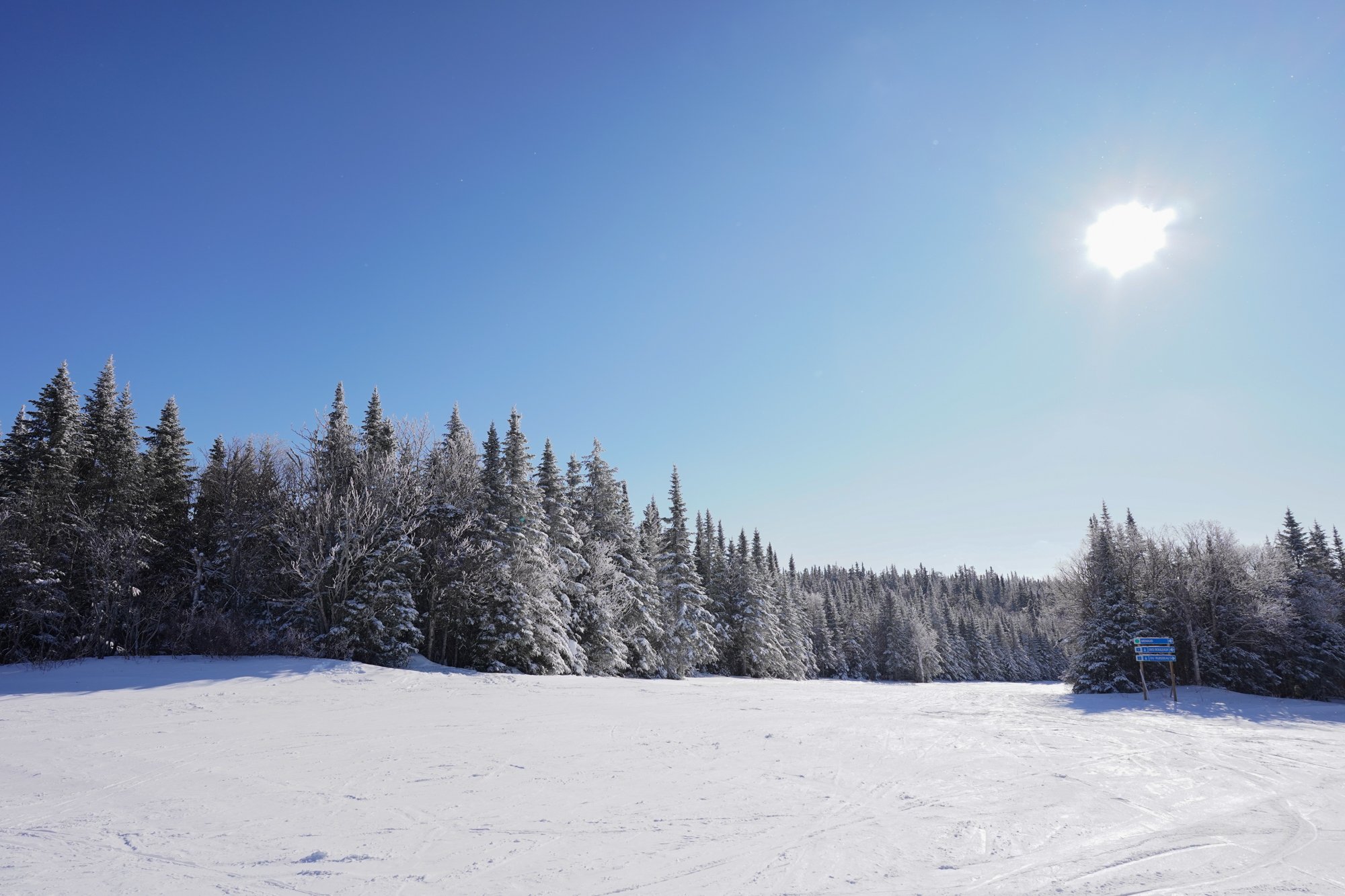
20mm is thus a comfortable focal length to use, providing a wide field of view that’s still intuitive to use. The obvious use is for landscapes. Thanks to its close focusing capabilities and limited distortion (when using in-camera corrections, at least), the 20mm can also be used for candid photography, group portraits, lifestyle photography, vlogging, selfies, and to provide interesting perspectives for macro photography.
Thanks to its relatively small size, the Tamron 20mm pairs particularly well with Sony’s Tamron 20mm. This pair make up an excellent hiking and travel kit combined with small cameras like the Sony A7C.
The ability of the 20mm to focus at close distances makes it a surprisingly versatile tool. With a wide focal length, reaching significant magnifications requires getting particularly close to the subject, but can yield impressive results.
At close distances, the Tamron 20mm is produces the level of detail usually sought after with “macro” lenses, as seen from the 100% crop below.
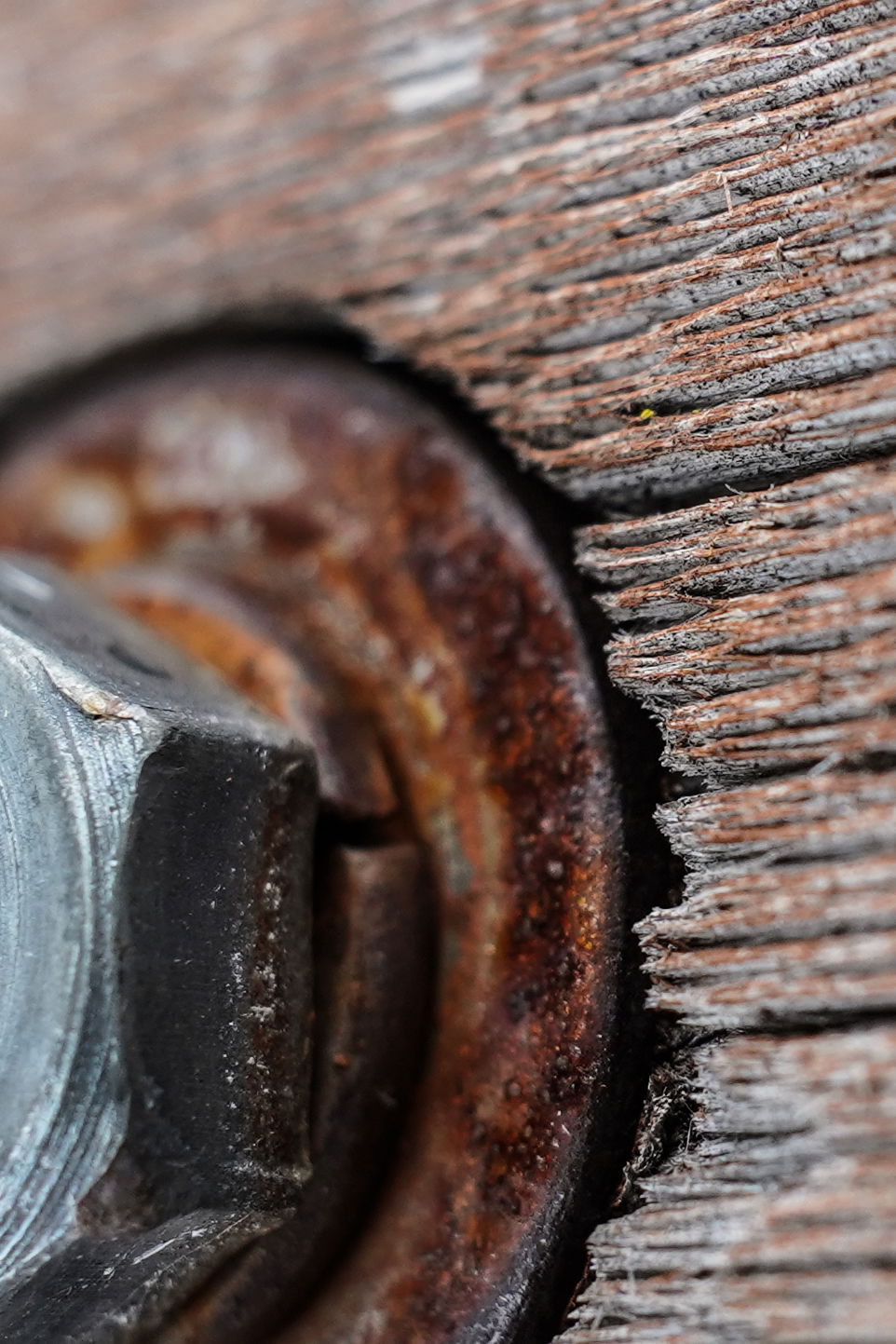
Color and Contrast
The Tamron 20mm generally delivers rich colors, richly saturated without going overboard. There is a lot of information, especially in the highlights. Results will of course depend on the color profile.

Starbursts
Starbursts, sometimes called sunstars, are a pleasing aspect of the Tamron 20mm.
At the wider apertures, starbursts are mostly absent, but using smaller values, starting at F8, generate well-defined starbursts, with rays tapering nicely as they extend away from the center point.
Metering and exposure
The Tamron 20mm F2.8 tends to underexpose by about half a stop at its widest aperture, nothing dramatic but noticeable when comparing results at varying apertures.
Sharpness
Sharpness, or a lens’s ability to resolve small details, is far from the only important characteristic of a lens, but it is probably the one which many users look at first. Soft images distract the viewer and the sharpest point in an image draws the eye of the viewer.
There are several ways to measure resolution. Some are quantitative, such as the number of lines per millimeter that can be resolved, while others are comparative, such as using a standardized scene to pit lenses against one another. We will use the latter, and supplement it with real-life samples.
To evaluate sharpness, we use a standard test chart that can be used to compare lenses to one another. We place the camera and lenses at a distance of 100x the focal length, so that the chart occupies the same area on all test images. The chart is positioned successively in the center, on the edge and corner off the frame, testing all apertures each time. Focus is repeated for each position to avoid field curvature contributions.
This test will not show how good a lens can be. Quite the contrary, it is a stress test to illustrate the limits of a lens’s capabilities.
Resolution is of course sensor-relevant. For this test we use the A7C camera. Sony’s top of the line sensors will put more challenge on the lens, but most users are likely to use Sony’s proven 24MP sensor with this lens.
Test results at 20mm
The following images illustrate the results at all apertures at 20mm (note that the edge crop is different but the test conditions are the same).
| Center | Edge | Corner | |
| F2.8 | 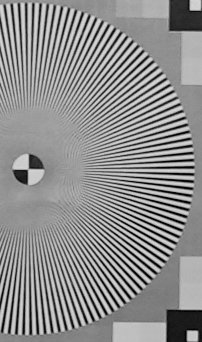 | 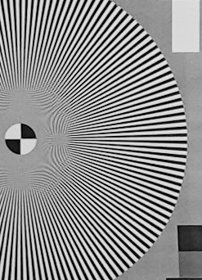 | 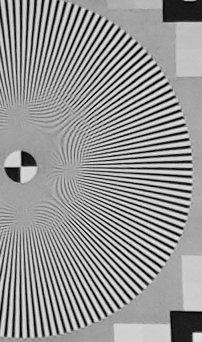 |
| F4 | 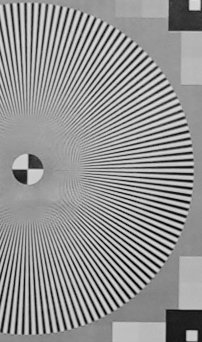 | 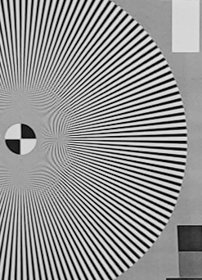 | 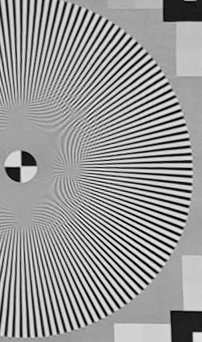 |
| F5.6 | 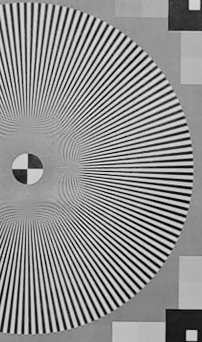 | 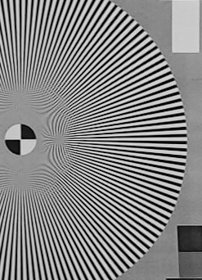 | 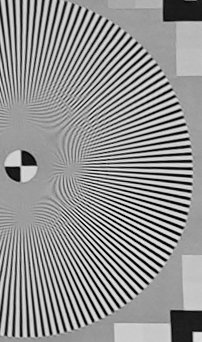 |
| F8 | 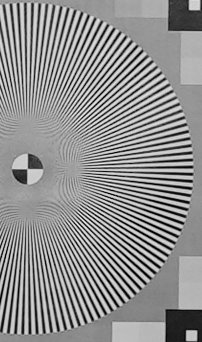 | 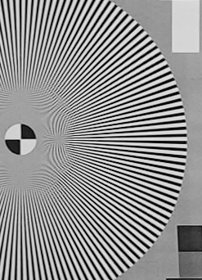 | 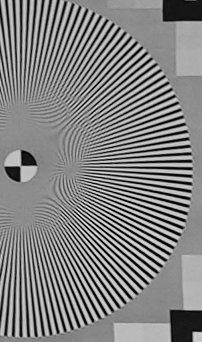 |
| F11 | 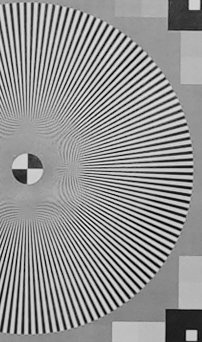 | 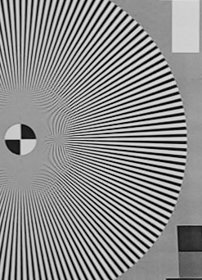 | 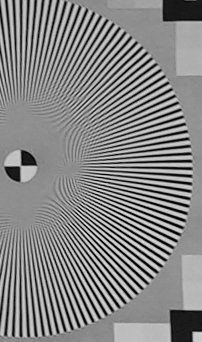 |
| F16 | 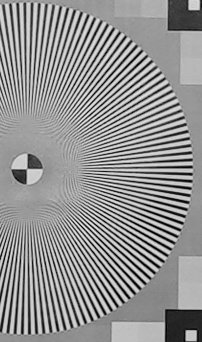 | 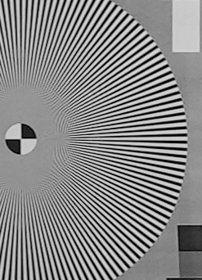 | 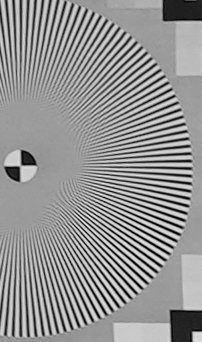 |
| F22 |  | 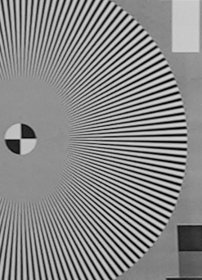 | 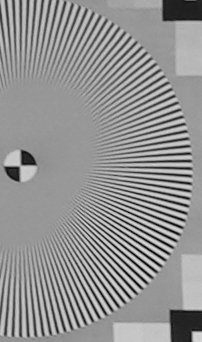 |
Sharpness results with the Tamron 20mm are admirable. Wide open, sharpness is very good in the center and edges, and only a little behind on the corners. F4 improves across the frame and, between F5.6 and F11, results are more than excellent, and extremely uniform. F16 still shows excellent center sharpness, very good edges and good corners. F22 is still usable, but corners show visible degradation.
These results are, to put it bluntly, better than expected. Both the absolute resolution and the uniformity across the frame make the Tamron 20mm a stellar performer.
Vignetting
Vignetting, or the darkening of corners at wider apertures, is both a defect and a feature, as it can be used creatively to put emphasis on subjects closer to the center, create a mood or a vintage look. It can also be corrected automatically by modern cameras so is less of a problem than in the past. Still, it is useful to know how a lens performs when those corrections are absent. Even though the Tamron 20mm is a third-party lens, it can benefit from in-camera corrections.
The following chart illustrates the vignetting of the lens without corrections at 20mm, for full frame.
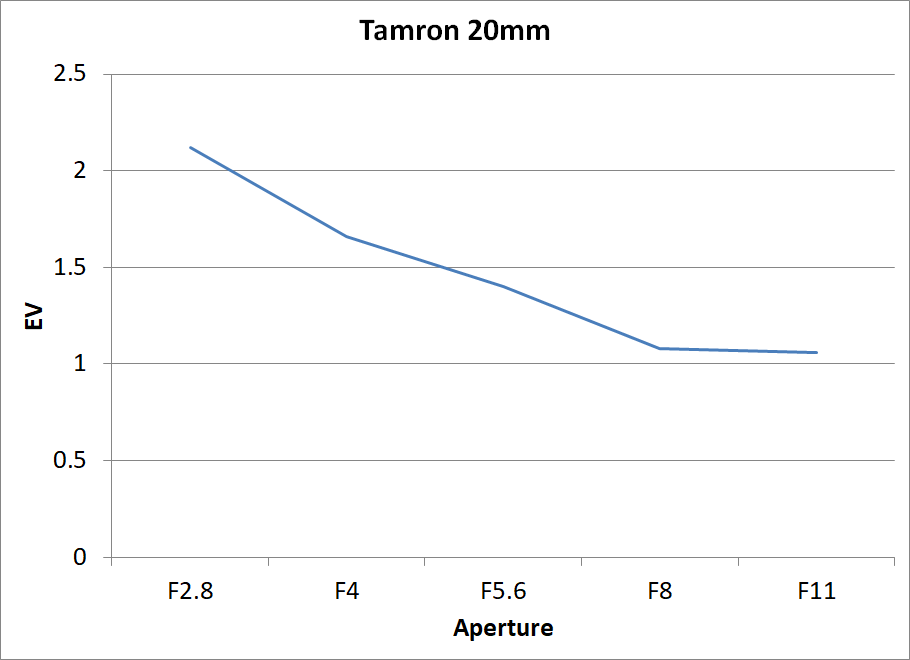
Vignetting without corrections is dramatic. Wide open it reaches above 2 EV and, even at smaller apertures, it never gets below 1 EV. It is obvious that the designers relied on in-camera correction profiles to mitigate vignetting.
The images below show the lens’s vignetting at varying apertures.
| Full frame 20mm | |
| F4 |  |
| F5.6 |  |
| F8 |  |
| F11 |  |
| F16 |  |
Bokeh
Bokeh is a Japanese term describing the quality of the background blur. It does not relate to the depth of field but to the areas in the image that are beyond the range that is expected to be in focus.
Bokeh is highly subjective. In general, a smooth bokeh with blurred shapes and contours is perceived as being of a higher quality. Note that a shallow depth of field does not always equate a more pleasing bokeh.
To evaluate the characteristics of the background blur, we took pictures at varying apertures, using a scene with a lot of detail and bright highlights. The following images show the results.
| F2.8 |  |
| F4 |  |
| F5.6 |  |
| F8 |  |
| F11 |  |
| F16 |  |
| F22 |  |
Bokeh is good, particularly for a wide angle lens. It goes beyond expectations, with smooth textures and gradual transitions. The circular aperture blades help the lens deliver highlights with a pleasant, circular shape, until F5.6 where they take a more angular appearance. Even then, they are not distracting. At F11 and beyond, the background blur becomes busier, with less of a smooth texture, but it is very unlikely that the lens will often be used for subject isolation at this aperture value so this shouldn’t be a problem in actual use.
In short, the Tamron 20mm delivers results above expectations for a wide angle lens. Bokeh is generally not an important aspect of wide angle lenses, however because of the close focusing capabilities of the lens, bokeh takes on a particular importance. It is good to see the lens perform well in that regard.
Flare and Ghosting
Flare is a decrease in contrast caused by reflections on internal lens elements. Ghosting is the appearance of orb-shaped artifacts in an image containing a light source, caused by the same internal reflections. High-quality coatings reduce the importance of flare and ghosting in an image.
We test flare and ghosting by taking pictures of a bright light source positioned at the center and on an edge of the frame, at varying apertures.
Test results at 20mm
| Center | Corner | |
| F2.8 | 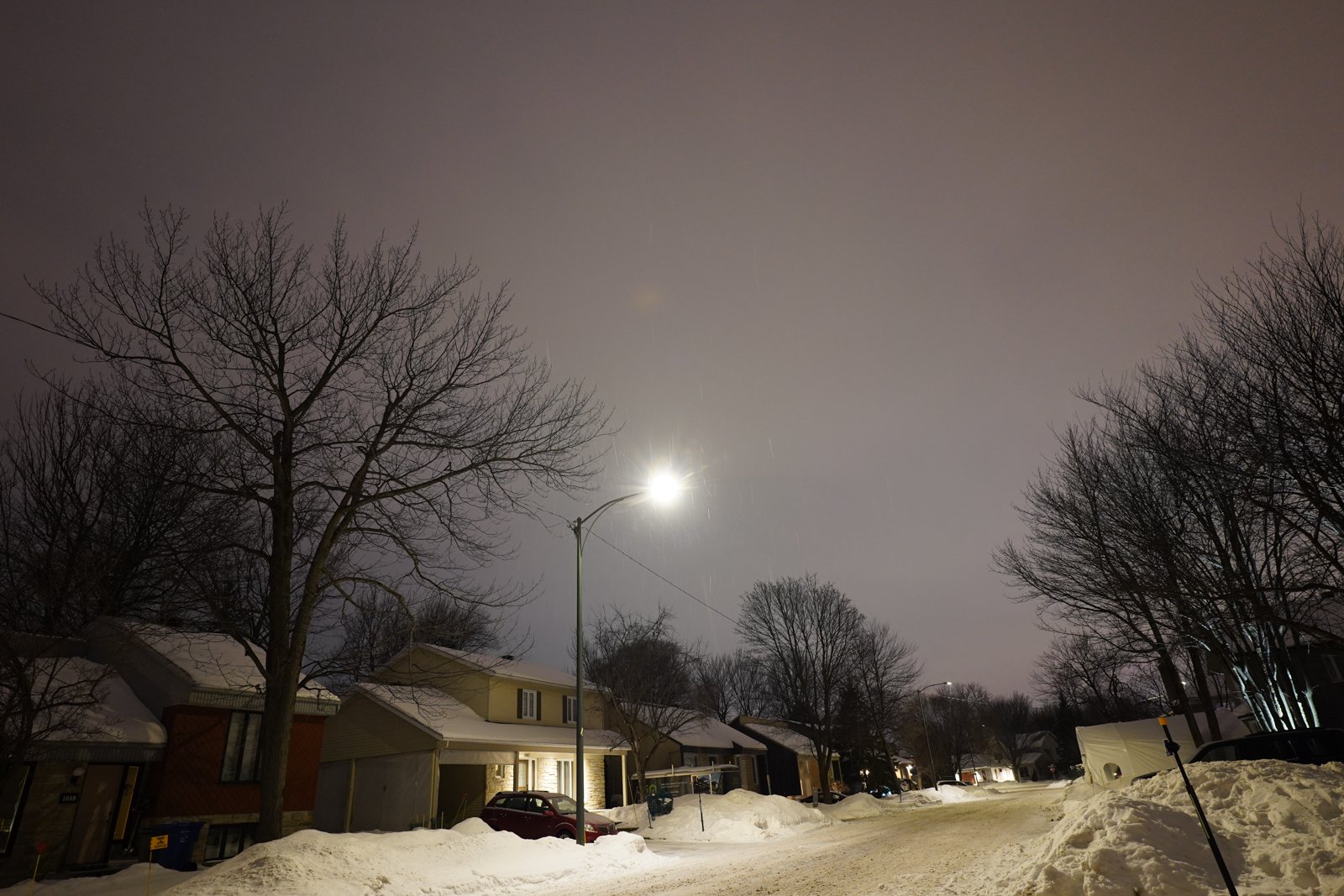 | 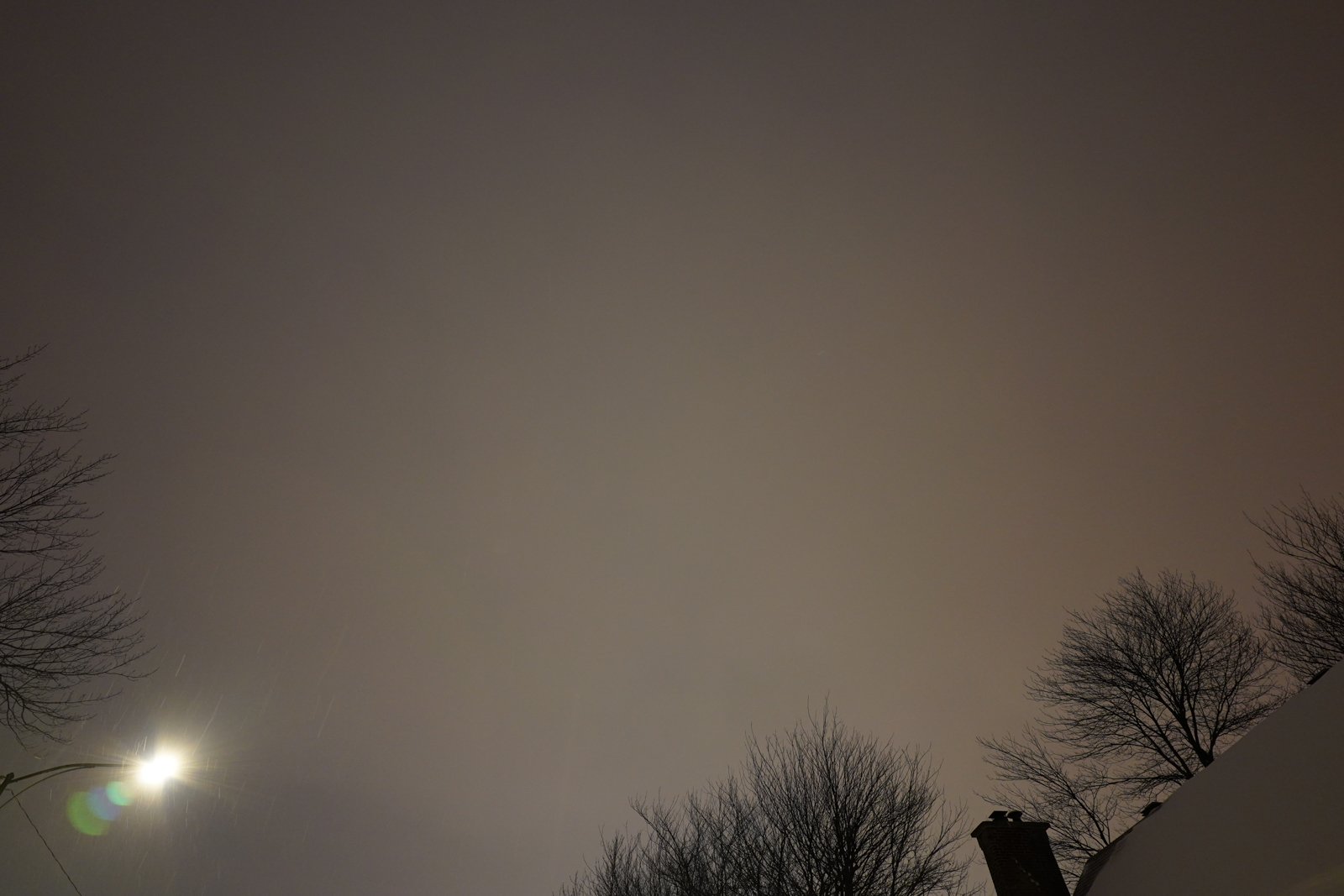 |
| F4 | 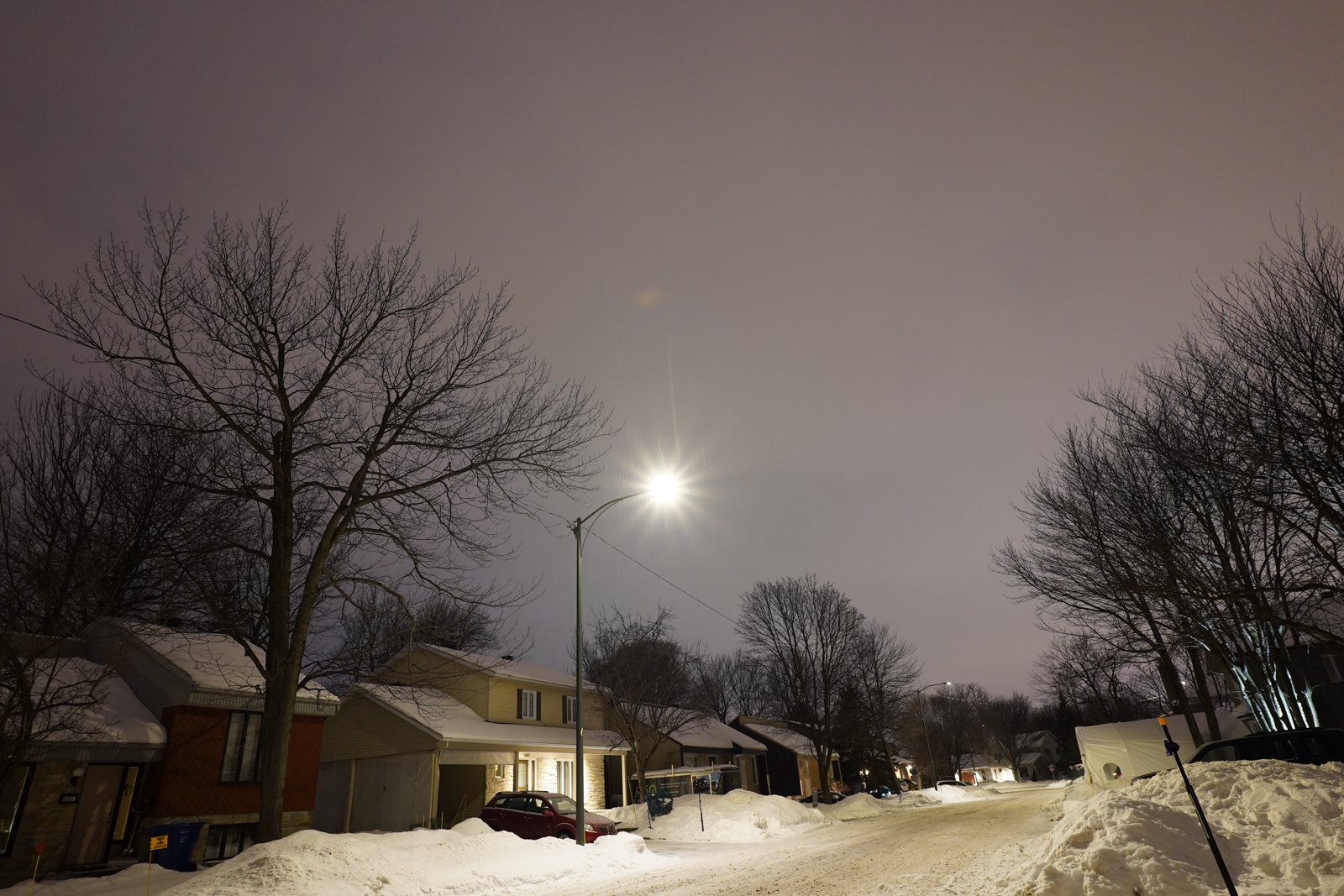 | 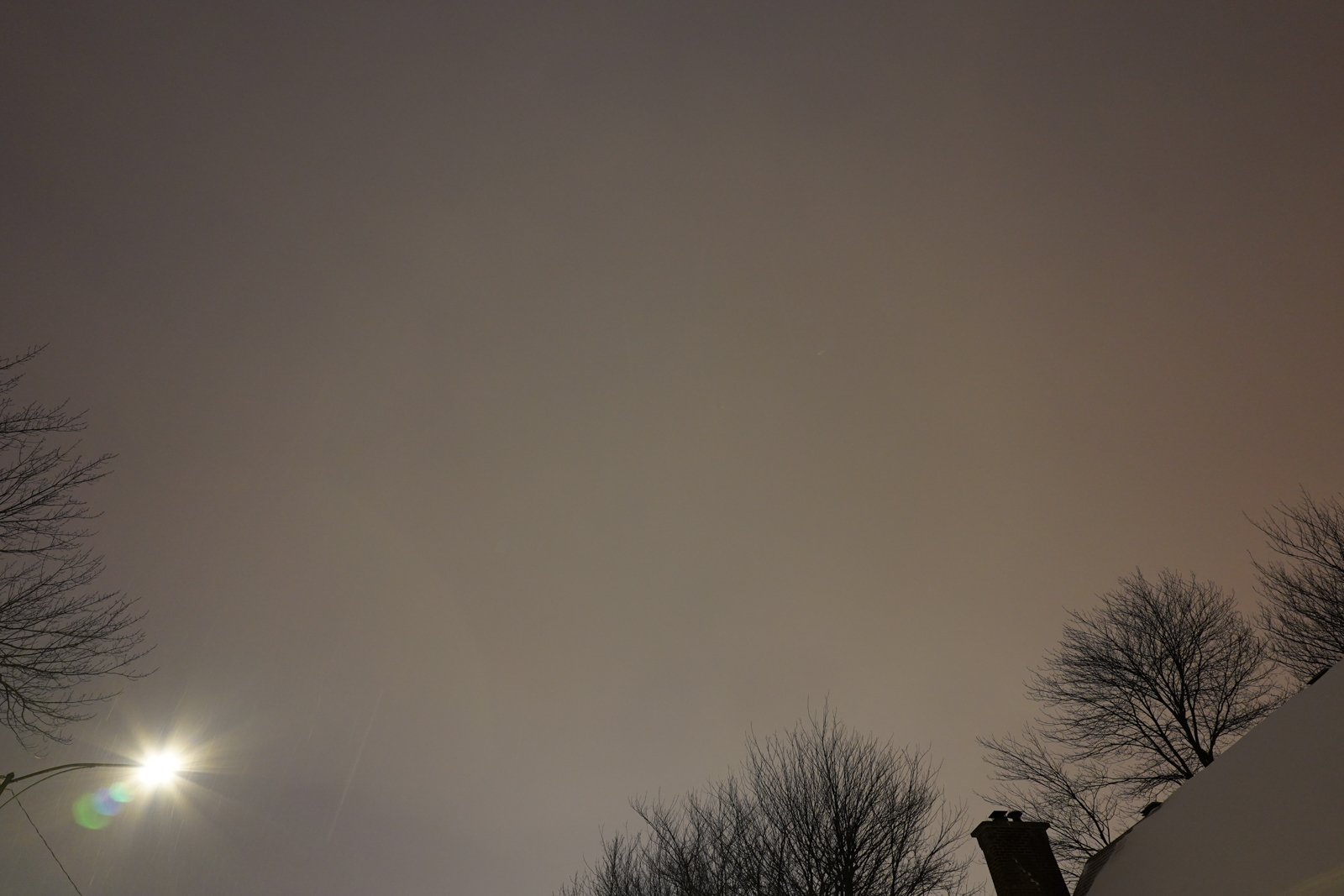 |
| F5.6 | 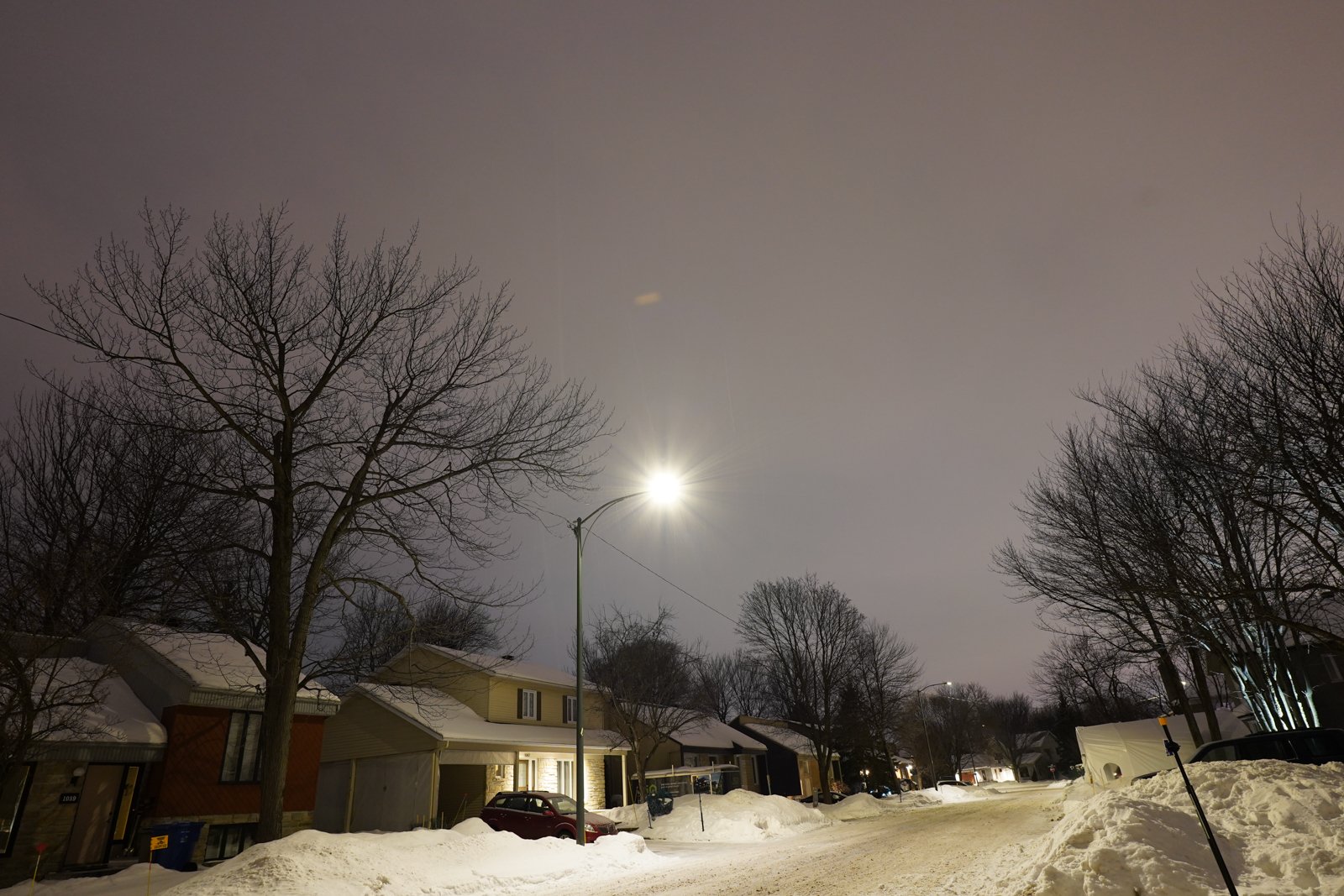 | 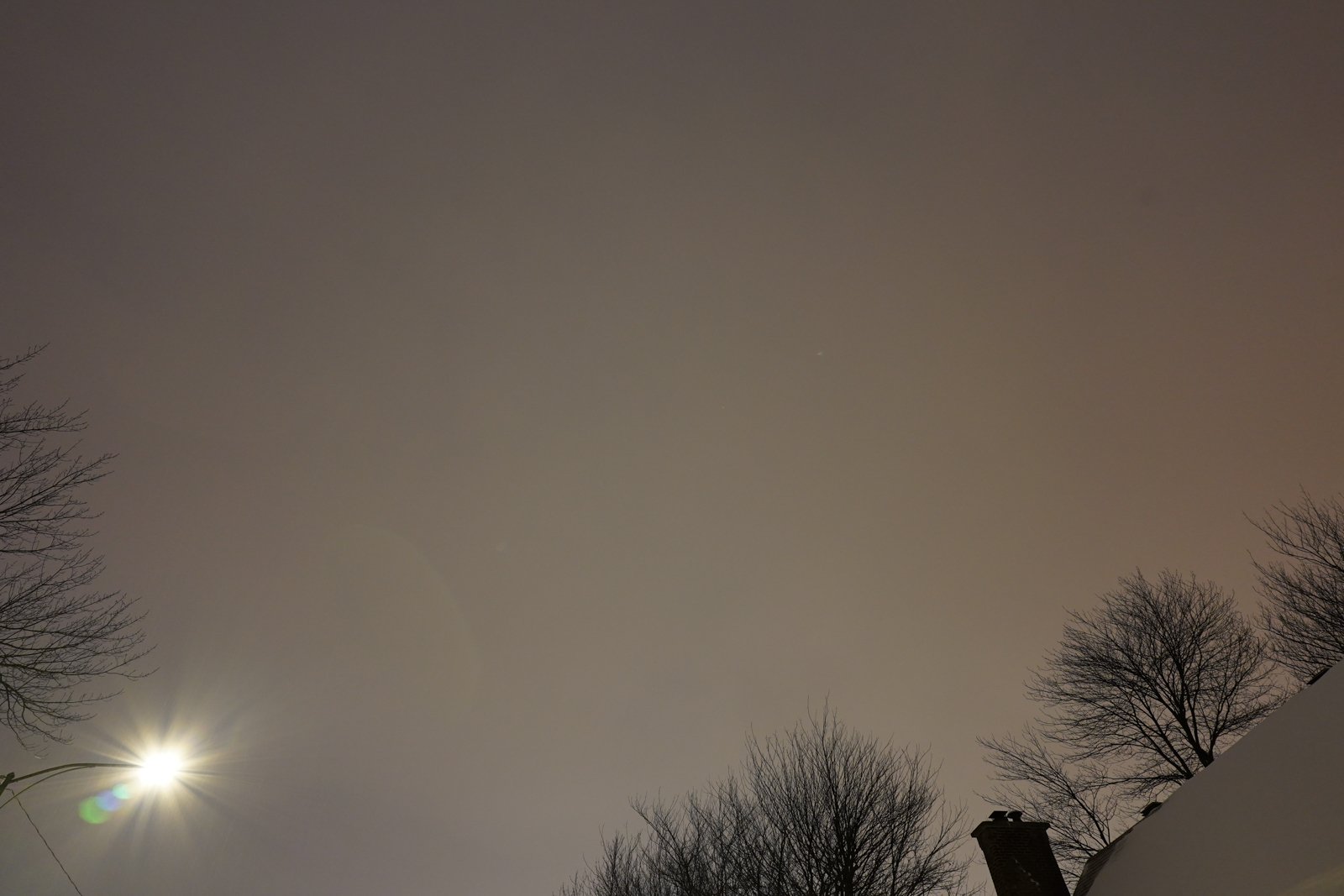 |
| F8 | 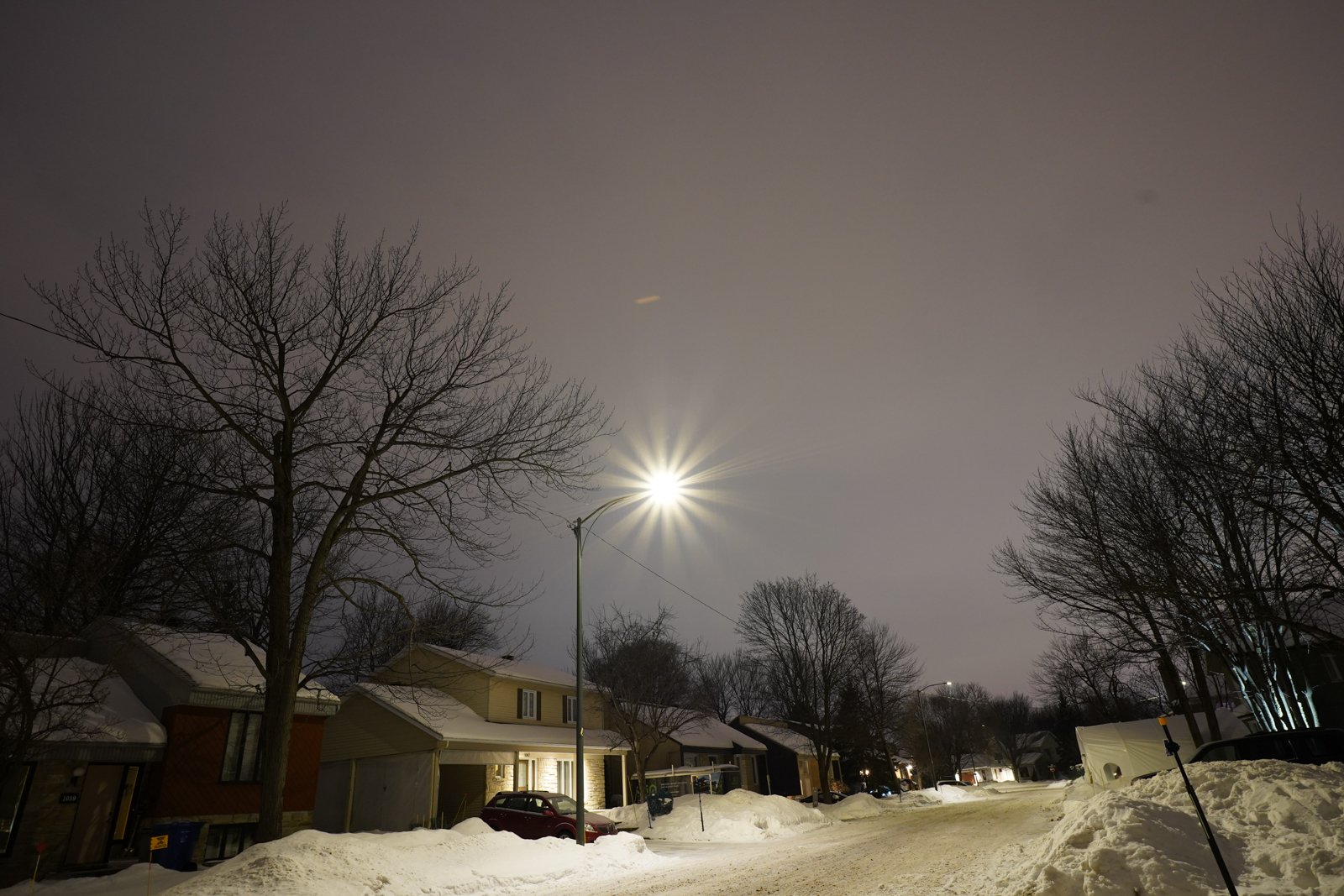 | 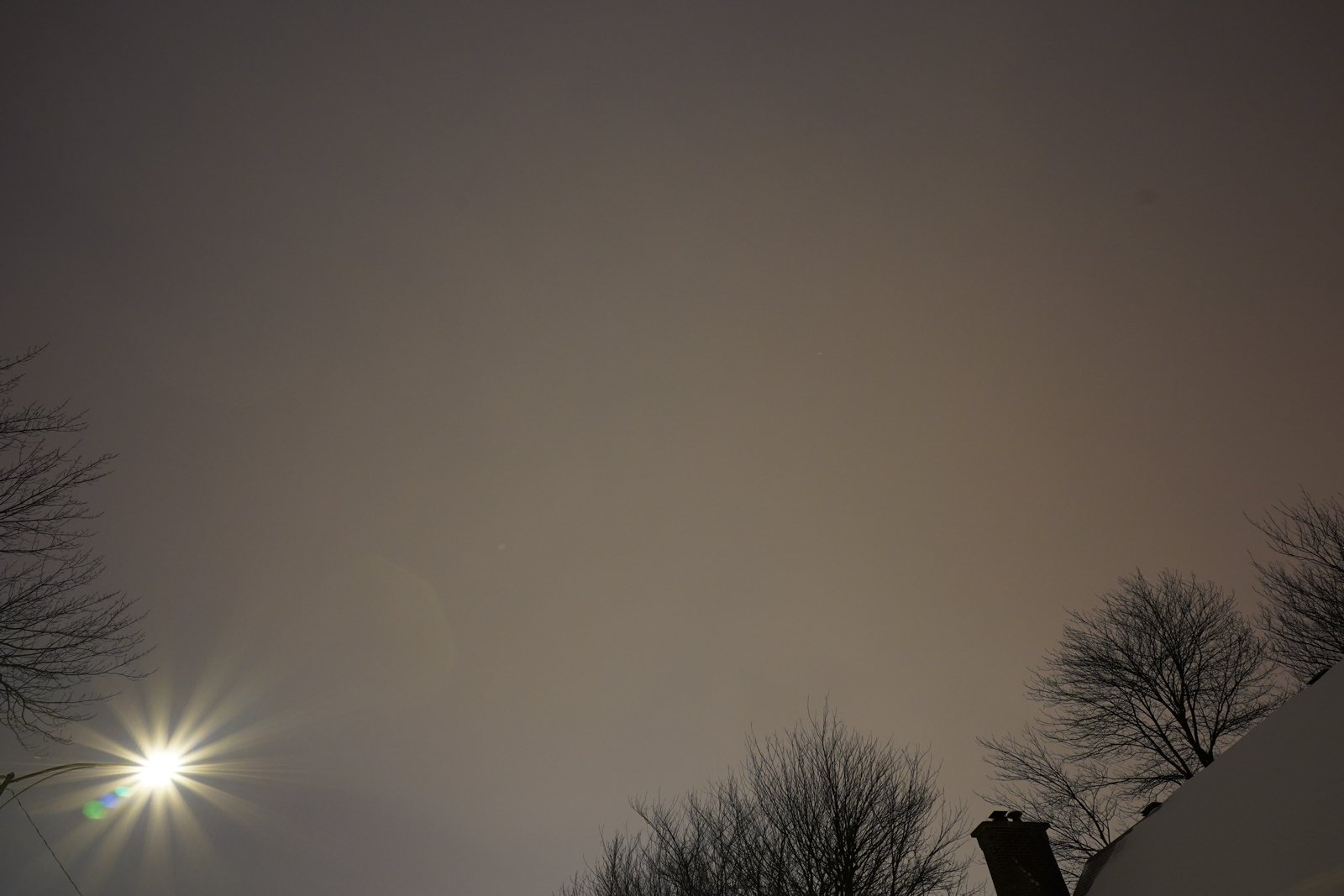 |
| F11 | 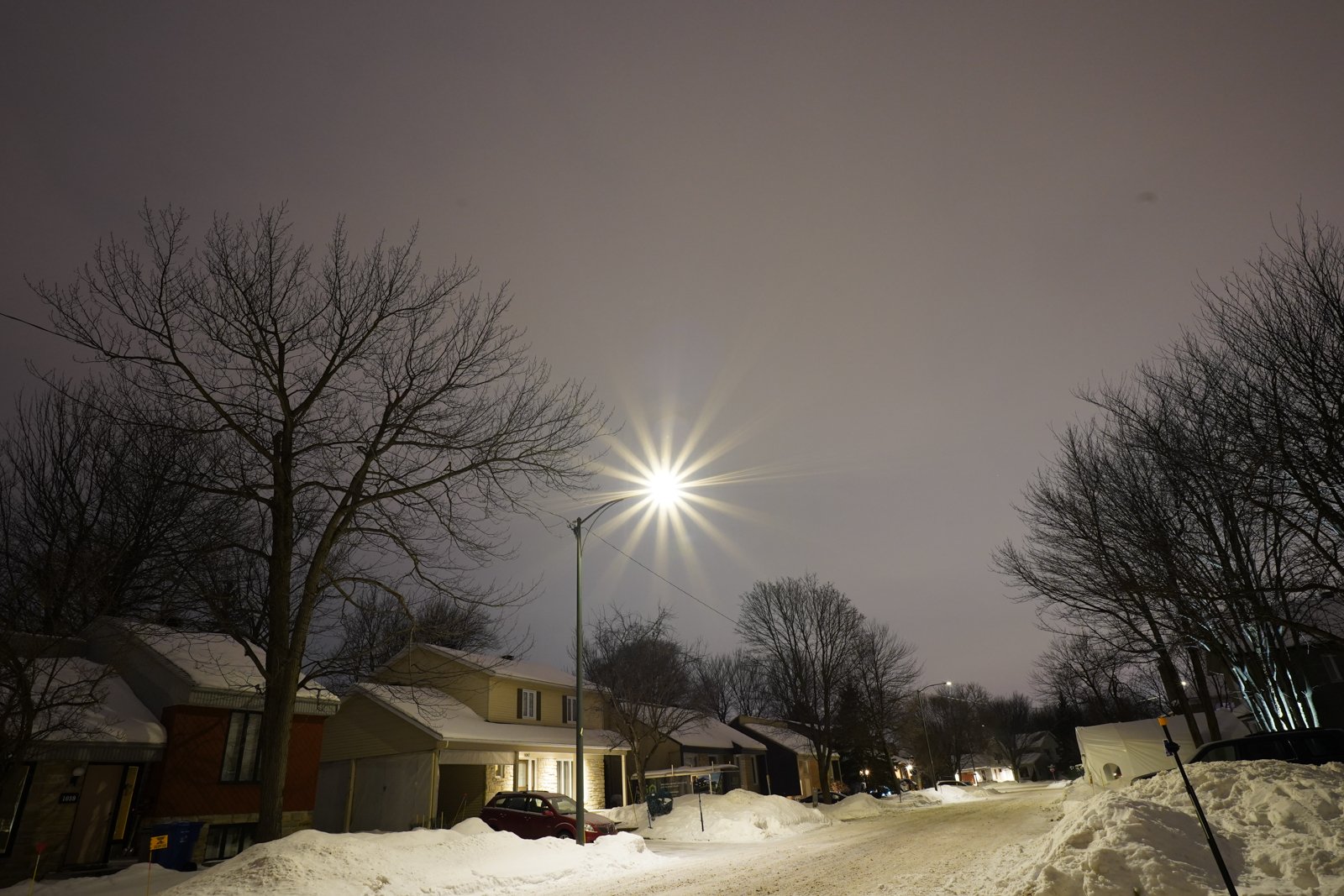 | 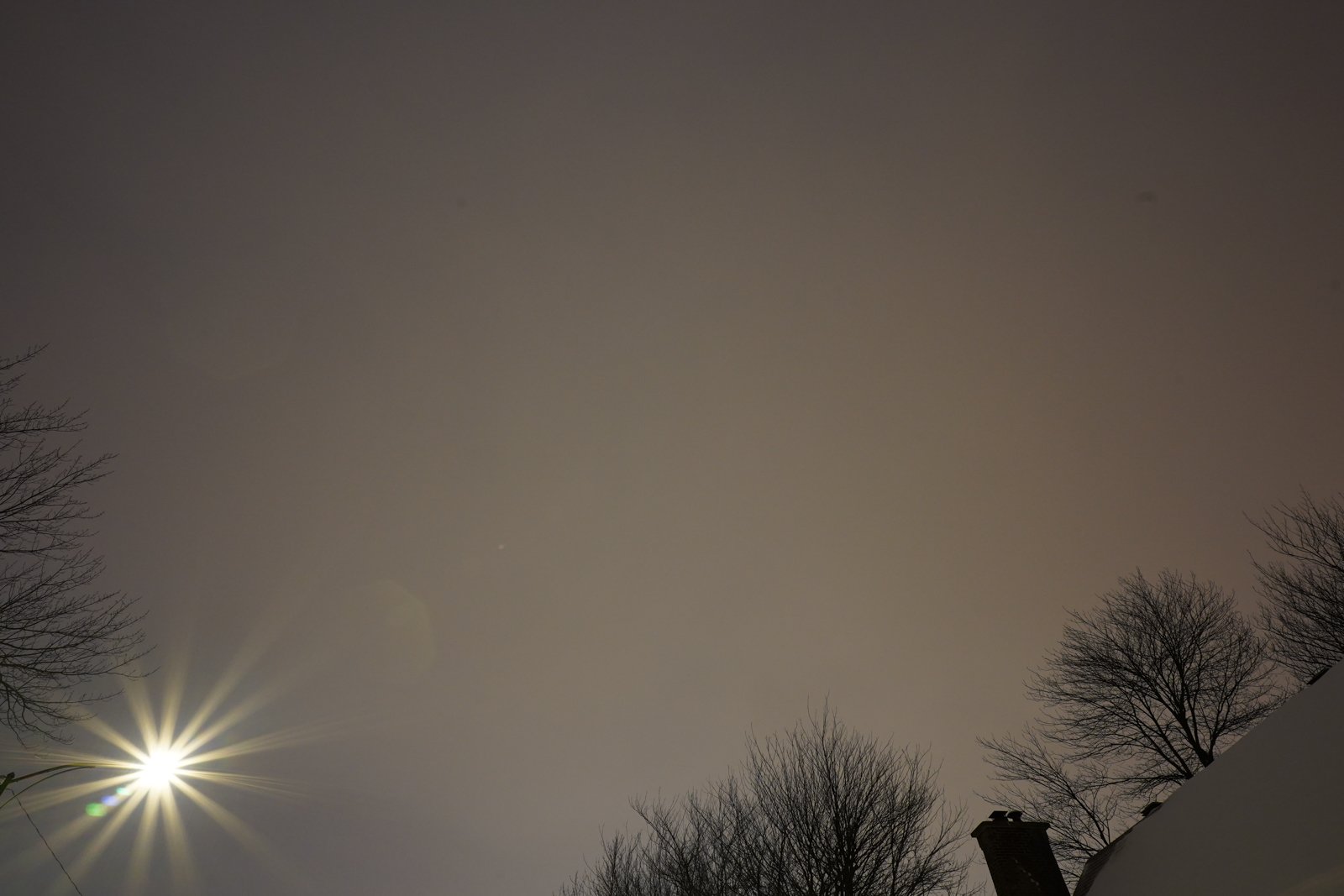 |
| F16 | 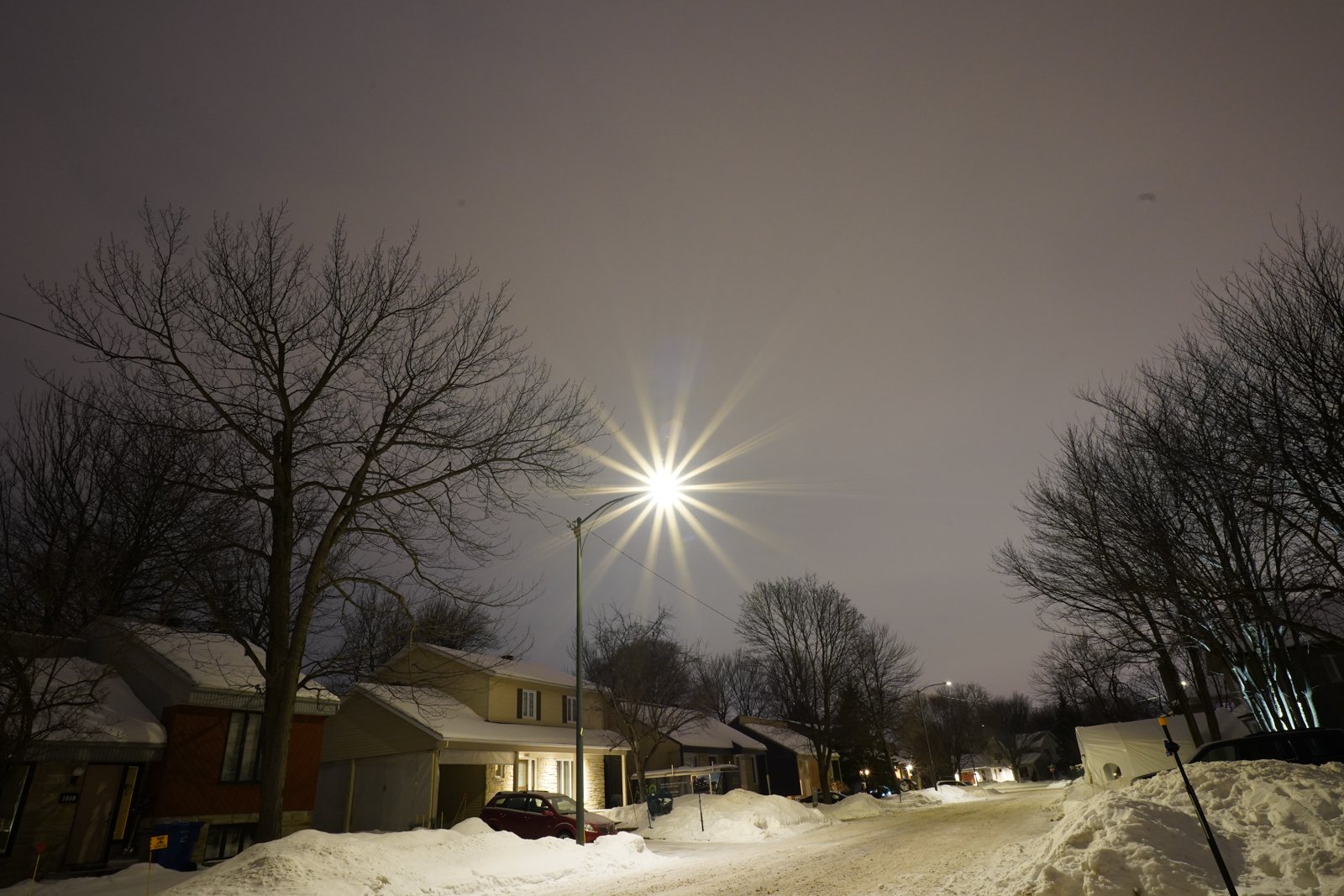 | 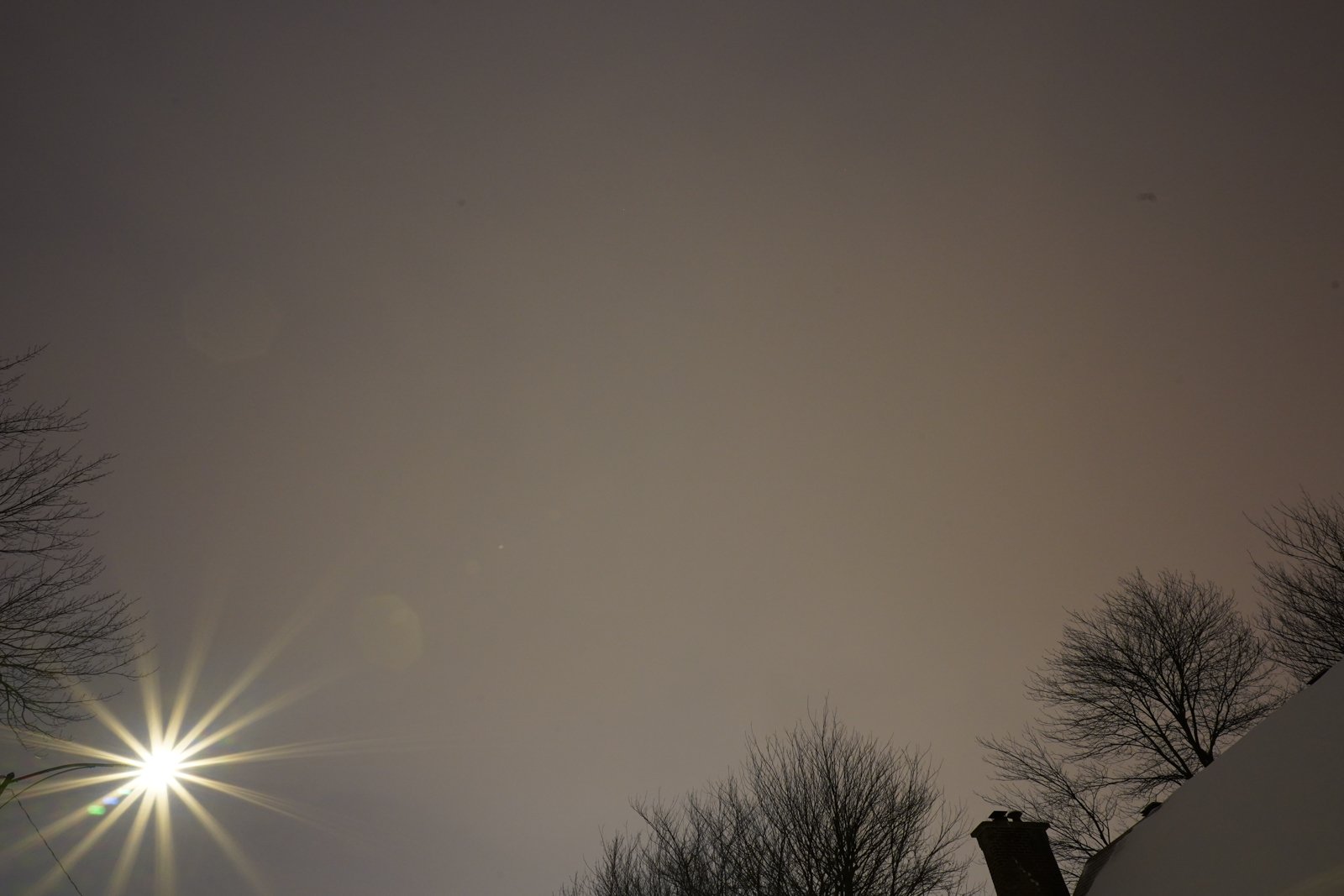 |
| F22 | 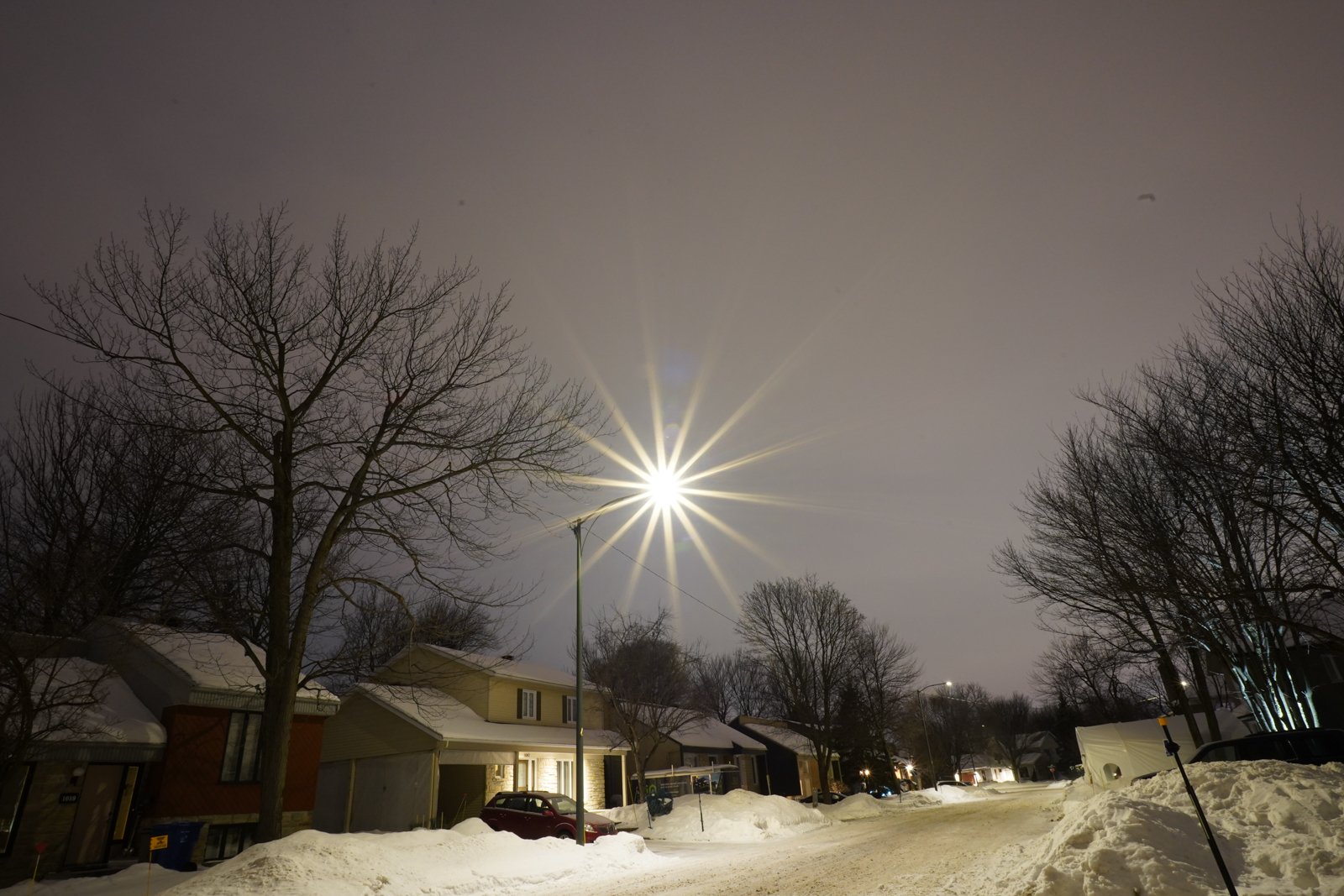 | 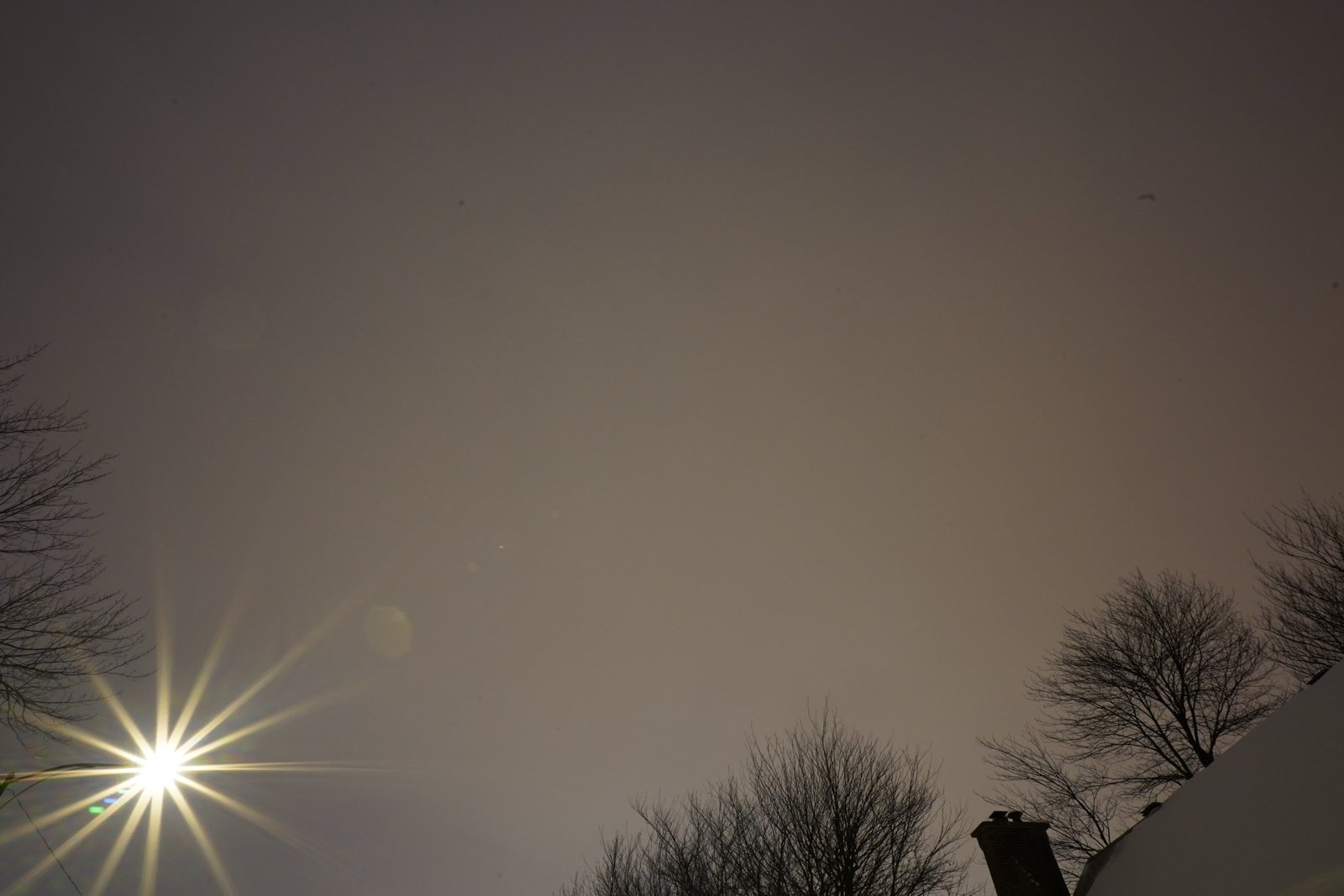 |
In the center, flare is discrete but present even wide open. It manifests itself as a ghost a little above the light source. This ghosts mostly disappears at smaller apertures, but other orbs appear starting at F11. They are not distracting, and probably won’t have much impact in actual use.
In the corner, results are a bit unusual. There is a series of ghosts close to the light source, towards the corner, even at wider apertures. A second streak of ghosts appear at smaller apertures, towards the opposed corner. Again, these are not overly distracting, but will be noticeable in many cases.
In summary, ghosting is present in most situations with the Tamron 20mm, but rarely significant enough to be a distraction. On the plus side, flare is almost absent.
Chromatic aberration
Chromatic aberration (CA) occurs because different colors do not always have the same focal point. With modern lenses designs, which are better corrected than vintage designs, this is more likely to occur in out-of-focus areas. CA effects are more visible near fast transitions from bright to dark areas.
Most modern cameras have built-in tools to remove CA. Digital manipulations can have an impact on other aspects of an image, thus it is useful to know how a lens performs when those automatic corrections are disabled.
Our test sets up the camera at 45° and focuses on the center of the frame, with targets at the center, top and bottom. Images are captured at varying apertures. We used a focal length close to the middle of the range.
| Top | Center | Bottom | |
| F2.8 | 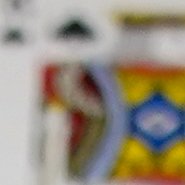 |  | 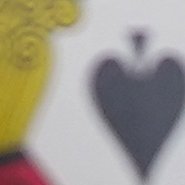 |
| F4 | 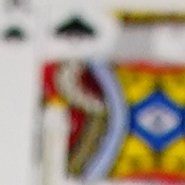 |  |  |
| F5.6 | 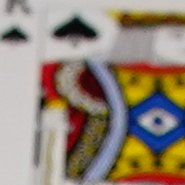 |  |  |
| F8 | 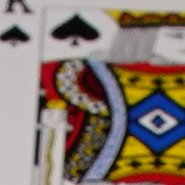 |  | 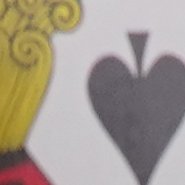 |
| F11 |  |  |  |
| F16 | 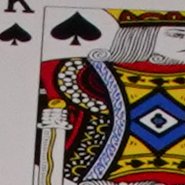 |  | 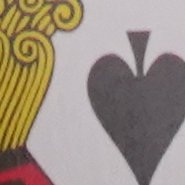 |
| F22 |  |  | 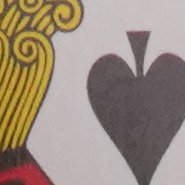 |
There is absolutely no visible CA anywhere in the frame, either in the central, in-focus section or towards the top or bottom. This is excellent, and above expectations.
Purple fringing
Despite having built-in corrections, there were some rare occurrences of purple fringing in our tests with the Tamron 20mm, as can be seen in the cropped example below. The effect is easy to miss and shouldn’t be a problem in most cases as its impact is quite small.
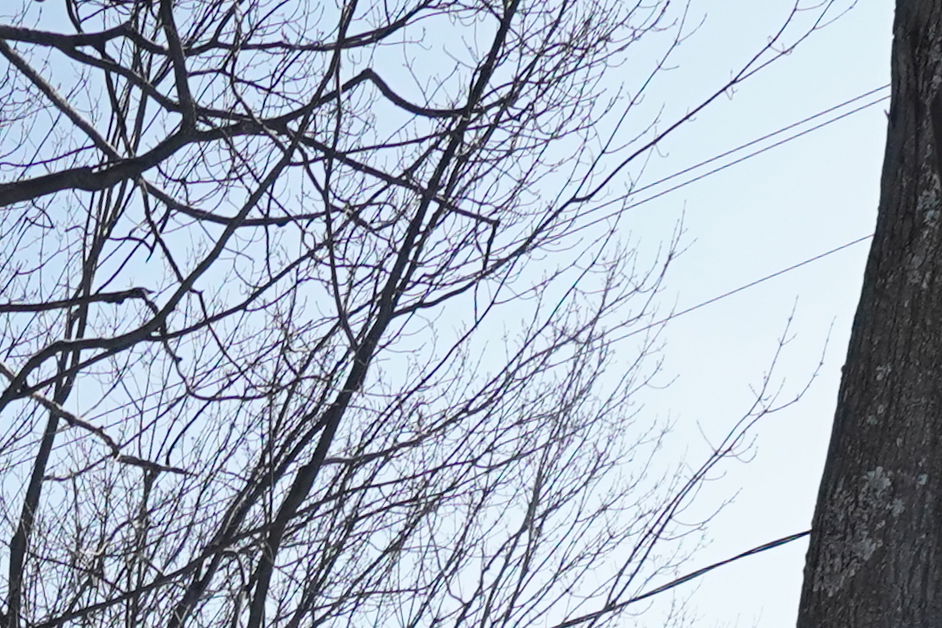
Distortion
Distortion refers to a lens’s ability to represent straight lines as straight lines… Wide angle lenses frequently generate barrel distortion, while longer focal lengths are more likely to cause pincushion distortion.
The Tamron 20mm benefits from built-in distortion correction. We performed the test with and without that correction enabled. We use a standard test pattern of straight lines to test at 20mm. The images below show the results with corrections disabled and enabled.
The effectiveness of the built-in is obvious. Without it, barrel distortion is very high, at 4%. This is pretty dramatic, it is obvious that the designers decided to rely on built-in corrections instead of designing compensations into the lens. With corrections activated, distortion is not a problem, but users should understand that this is an important limitation for that design. With corrections activated, distortion drops to an unnoticeable 0.3%.
Sample images
Here is a gallery of samples images captured with the Tamron 20mm F2.8. You can click on individual images for a larger view.

Sony A7C | F5.6 | 1/320s | ISO 400 
Sony A7C | F2.8 | 1/50s | ISO 2000 
Sony A7C | F5.6 | 1/160s | ISO 400 
Sony A7C | F5.6 | 1/500s | ISO 250 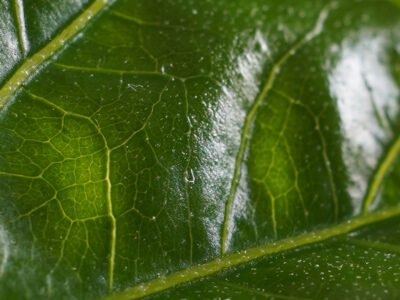
Sony A7C Crop | F8 | 1/8s | ISO 200 
Sony A7C | F5.6 | 1/1600s | ISO 250 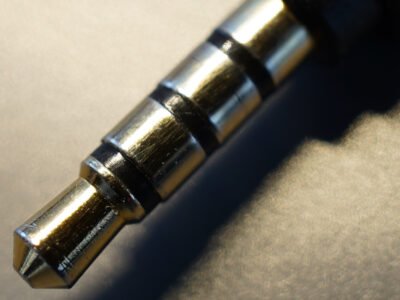
Sony A7C Crop | F5 | 1/4s | ISO 100 
Sony A7C | F5.6 | 1/640s | ISO 400 
Sony A7C | F3.2 | 1/2000s | ISO 400 
Sony A7C | F5.6 | 1/500s | ISO 250 
Sony A7C | F2.8 | 1/2000s | ISO 400 
Sony A7C | F5.6 | 1/1250s | ISO 250 
Sony A7C | F6.3 | 1/2500s | ISO 400 
Sony A7C | F5.6 | 1/1600s | ISO 250 
Sony A7C | F5.6 | 1/2000s | ISO 250 
Sony A7C | F5.6 | 1/1000s | ISO 250 
Sony A7C | F5.6 | 1/1600s | ISO 250 
Sony A7C | F5.6 | 1/1600s | ISO 250 
Sony A7C | F3.5 | 1/50s | ISO 2000 
Sony A7C | F3.2 | 1/40s | ISO 2000 
Sony A7C | F8 | 1/1000s | ISO 100 
Sony A7C | F3.5 | 1/1600s | ISO 100 

Sony A7C | F5.6 | 1/2500s | ISO 250 
Sony A7C | F8 | 1/4000s | ISO 500 
Sony A7C | F5.6 | 1/1000s | ISO 250
Conclusion
Third-party manufacturers when compared with OEM and the Tamron 20mm F2.8 is a fine example of that assessment.
Designed specifically for the E-mount, the 20mm is part of a trio of wide angle lenses from Tamron, each proposing the same dimensions and specifications (apart from the focal length).
Made of plastic (except for the lens mount), with no buttons or switches, the 20mm lacks some of the bells and whistles of more expensive lenses. Its light weight and plastic texture do not give a particularly premium feel. Despite this, it is well assembled and has proven reliable in use. It features weather sealing and internal zooming.
Optical performances show that the designers made conscious choices when balancing the design, taking advantage of in-camera corrections to sacrifice some elements such as distortion, while optimizing other aspects to achieve excellent results.
Sharpness is one such element. Results are much better than any expectations we might have had. Beyond the absolute resolution, one benefit is the uniformity of sharpness; subjects can be positioned anywhere on the frame without worry. This is perfectly aligned with the expected application as a landscape lens. Apart from F22, all other aperture values can be used reliably, and F2.8 is just as usable as smaller apertures.
Chromatic aberration is also well controlled. In fact, it is absent in our tests. There is a hint of purple fringing in specific scenes, but very hard to spot and thus almost a non-issue.
Bokeh is also superb, in line with what we would expect from a close focusing lens, but better than usual for a wide angle lens.
Distortion can be automatically corrected by the camera, thankfully. When left uncorrected, it is dramatic to say the least.
Vignetting is the other area where the optical design is lacking. Left uncorrected, vignetting will be hard to miss even at smaller apertures. Thankfully it is easy to correct.
Flare is almost absent, however some ghosting occurs in most situations. It is not prominent but something to be aware of.
The lens is able to create superb starbursts, and does not require overly small apertures to do so. This is certainly a perk.
Focusing is a weak point of the 20mm. While small adjustments are fast, and tracking perfectly reliable, changing the focus distance by a large distance will be slow, especially when coming from short focus distances towards longer distances.
In summary, Tamron created a compelling product with the 20mm F2.8. Light, compact, sharp, luminous and with a beautiful rendering, this lens shoots above its price regarding optical performances. Thanks to its low price, it should be on the shortlist of anyone looking for a wide full frame prime for the E-mount.
Pros
- Light, compact and weather resistant
- Great handling, craftsmanship better than expected
- Excellent sharpness and uniformity at all apertures
- Beautiful bokeh
- No CA and little PF
- Beautiful starbursts
- Useful close focusing capabilities
- Reliable AF tracking
- Low price
Cons
- No AF/MF switch, relies on camera menu
- Strong vignetting when left uncorrected
- Dramatic distortion
- Some ghosting
- Slow autofocus in many situations
- AF makes subtle clicking noise
Before you go
Do you already own this lens? If you do, we’d love to hear your thoughts in the comments below.

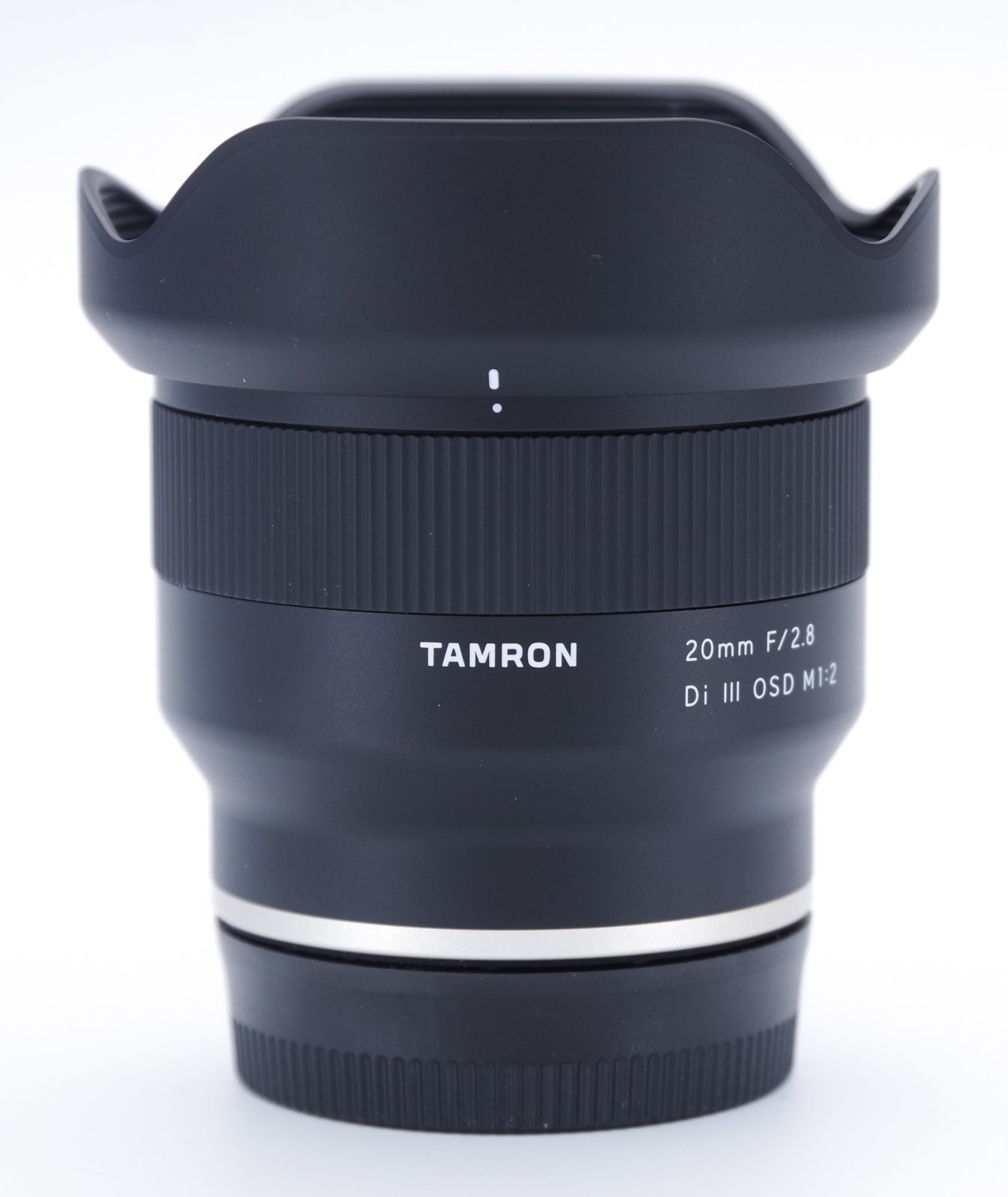
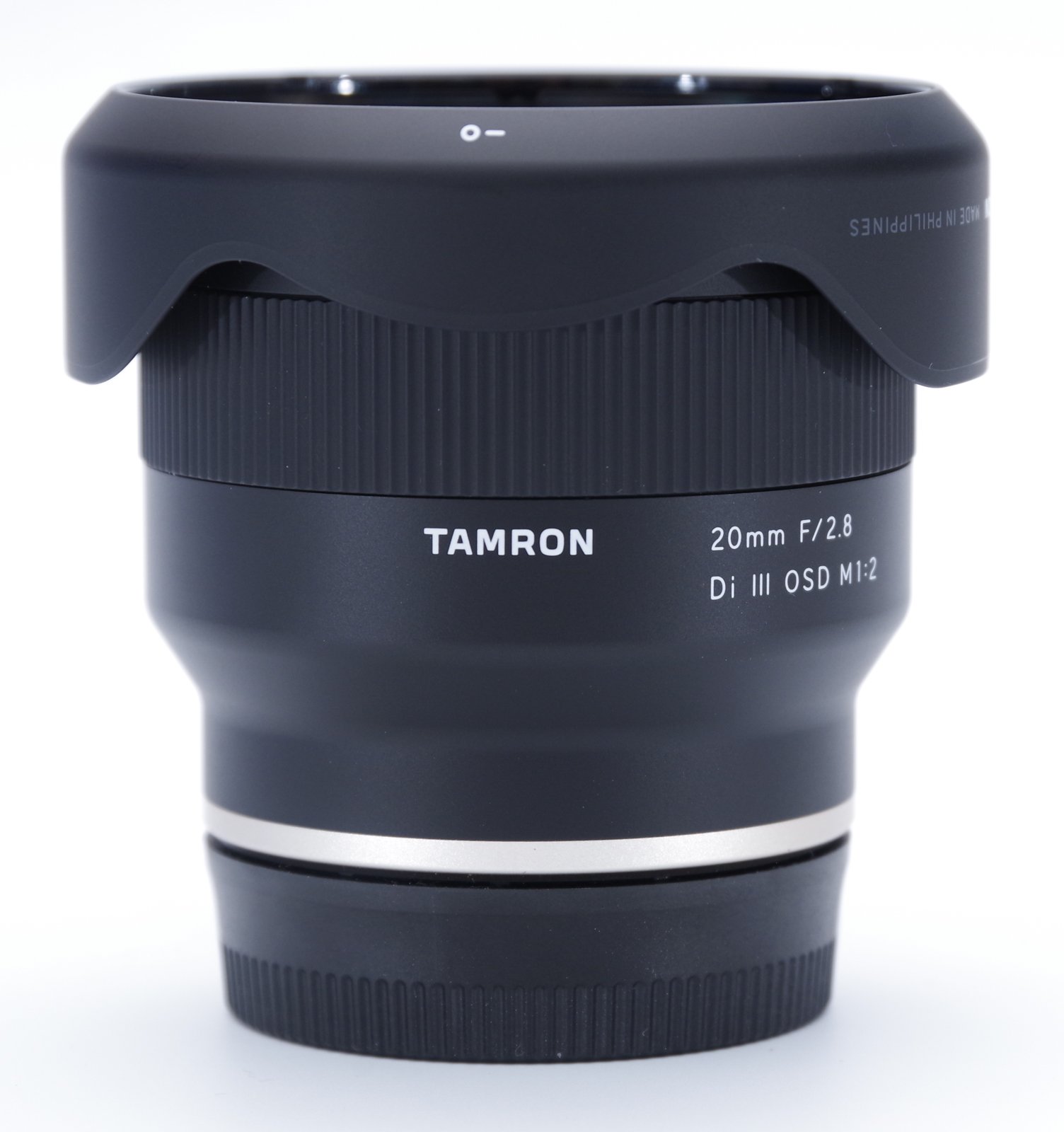
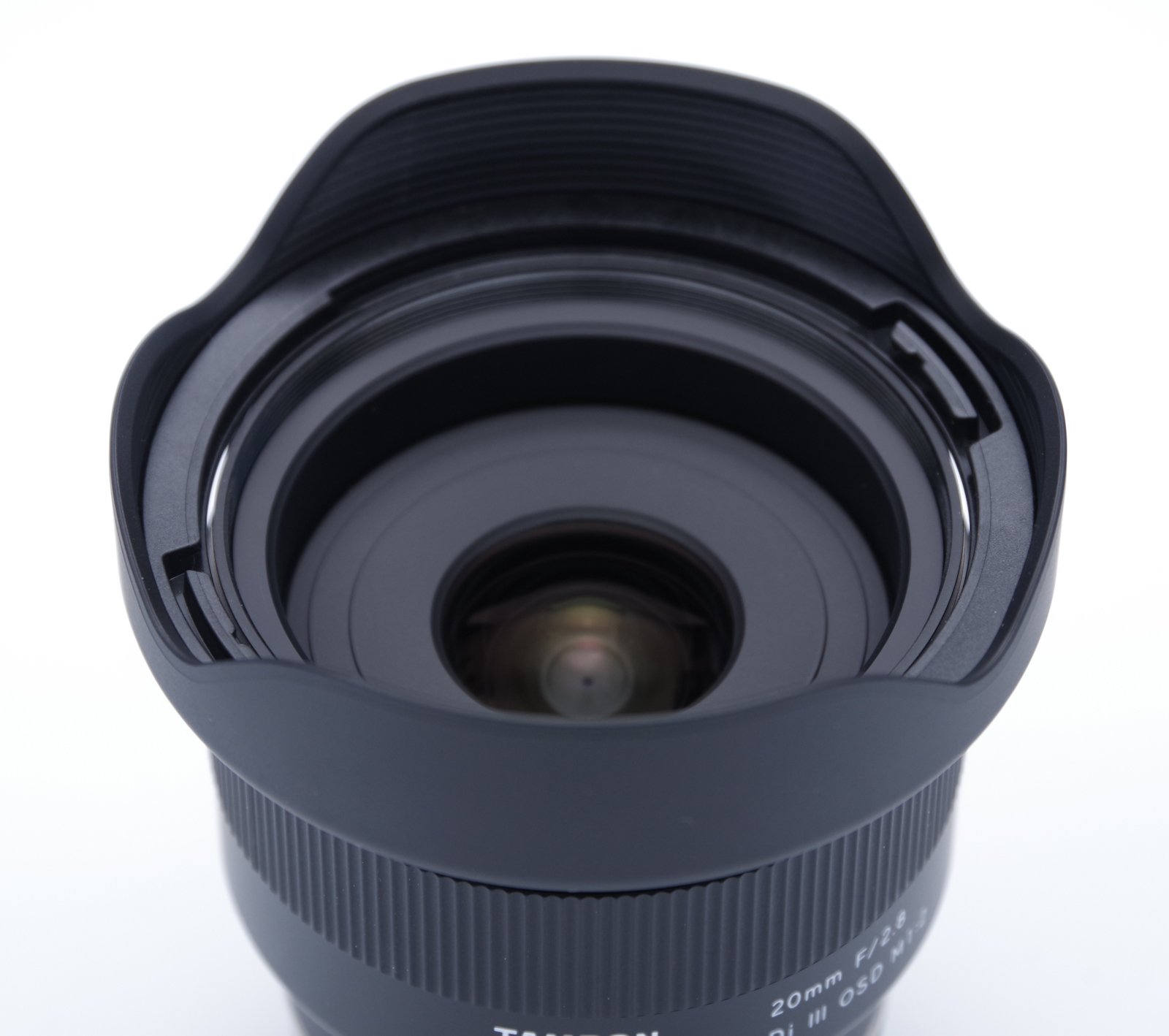
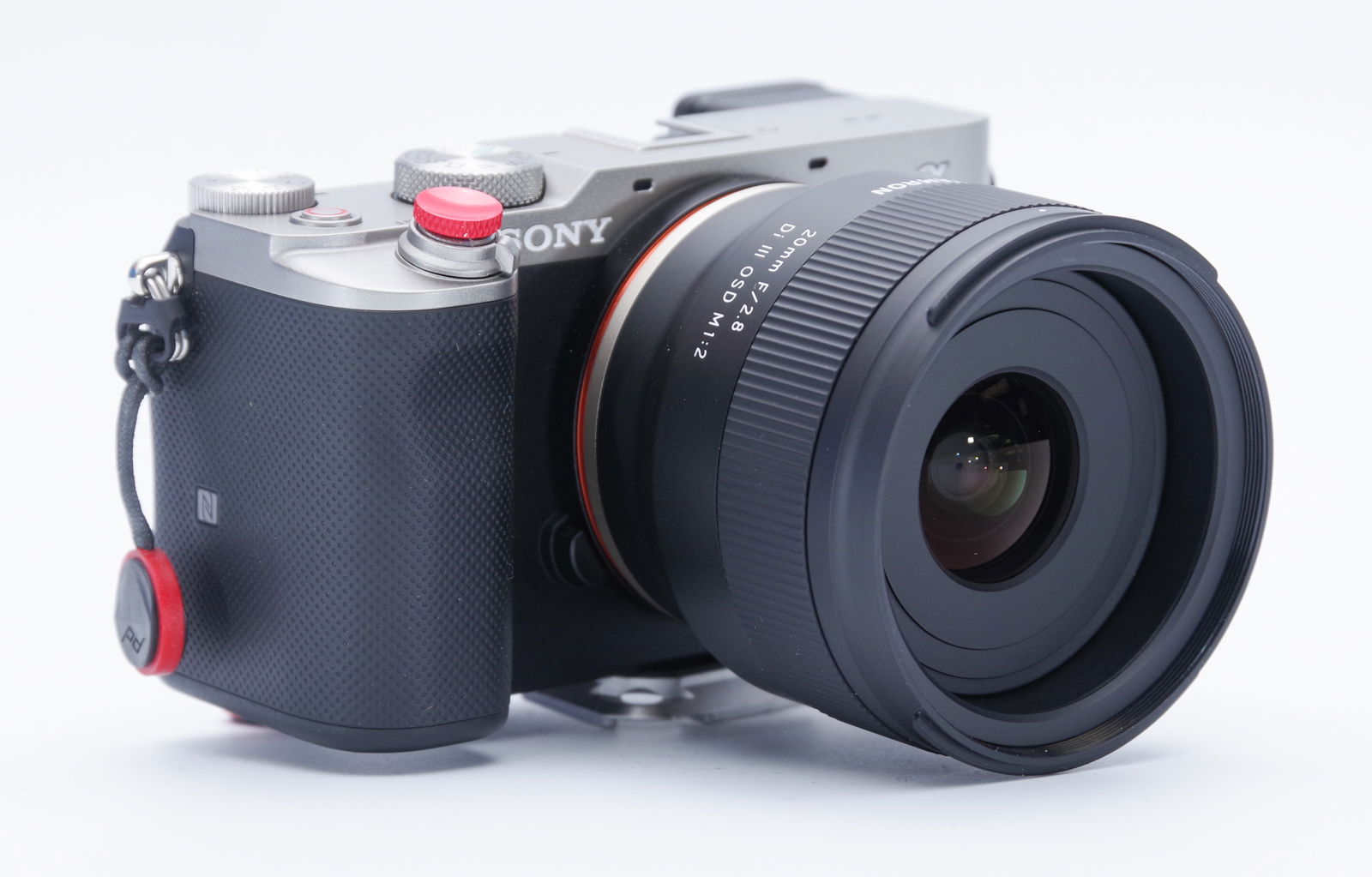
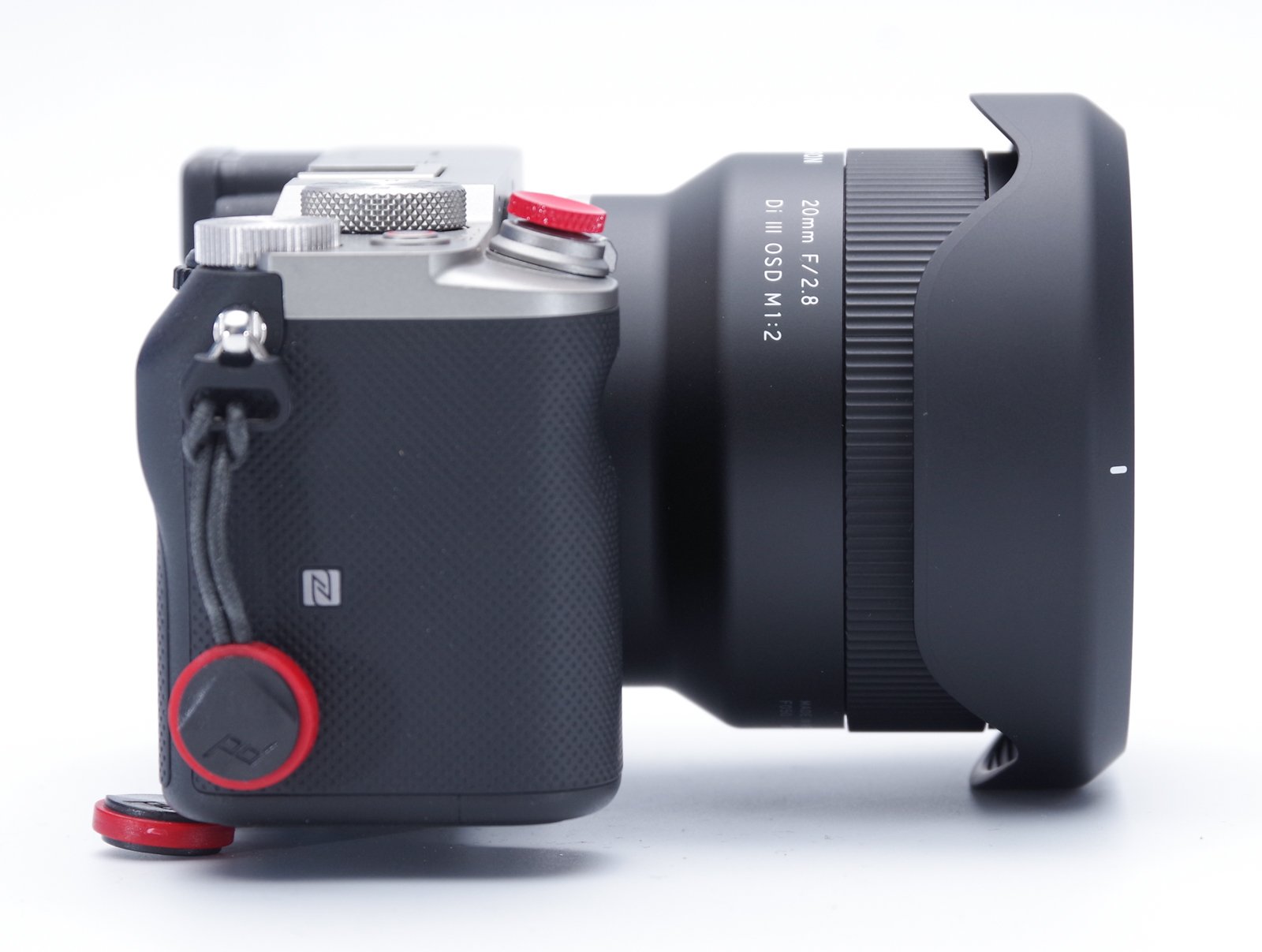
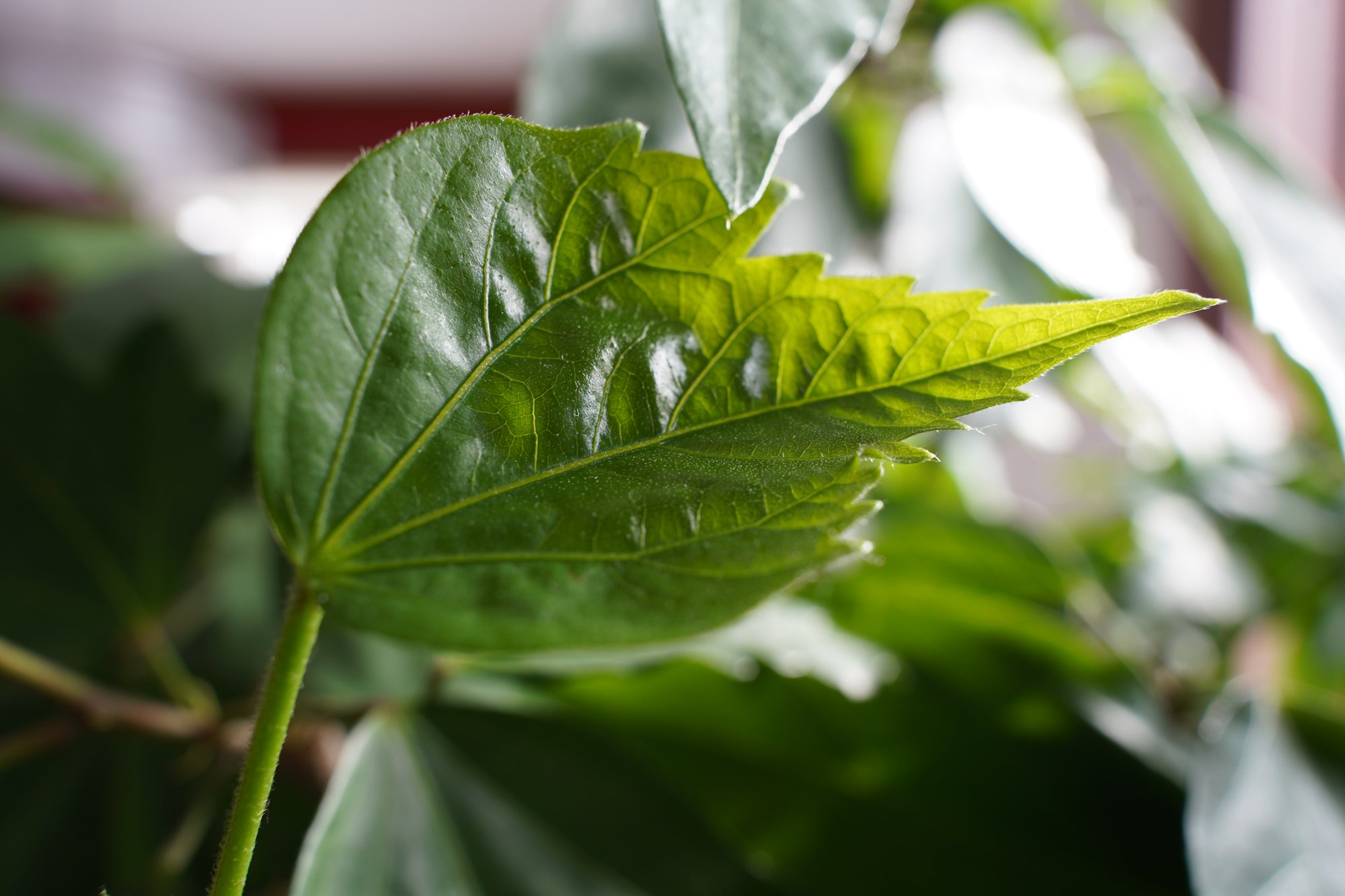
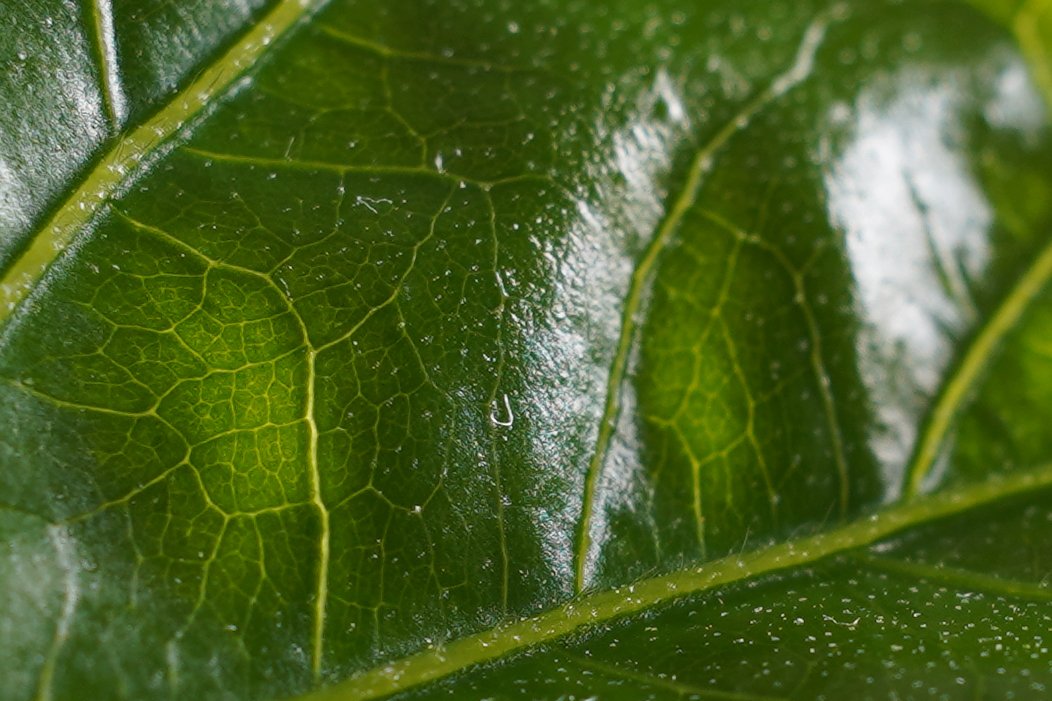



Leave a Reply